A well-planned basement drop ceiling can do far more than hide ductwork—it can shape acoustics, brighten a windowless room, and stamp the underground level with real personality. Recent materials make the grid lighter, greener, and easier to customize, while design hacks borrowed from pro installers let homeowners slip in texture, pattern, and smart lighting without sacrificing the easy access that makes a suspended system so practical. From moisture-proof PVC planks that shrug off damp Karachi summers to stretch-fabric panels that double as artwork, the twenty ideas below showcase just how versatile a basement drop ceiling can be. Read on and imagine which option will coax new life out of the square footage under your feet.
1. Classic Acoustic Mineral-Fiber Drop Ceiling
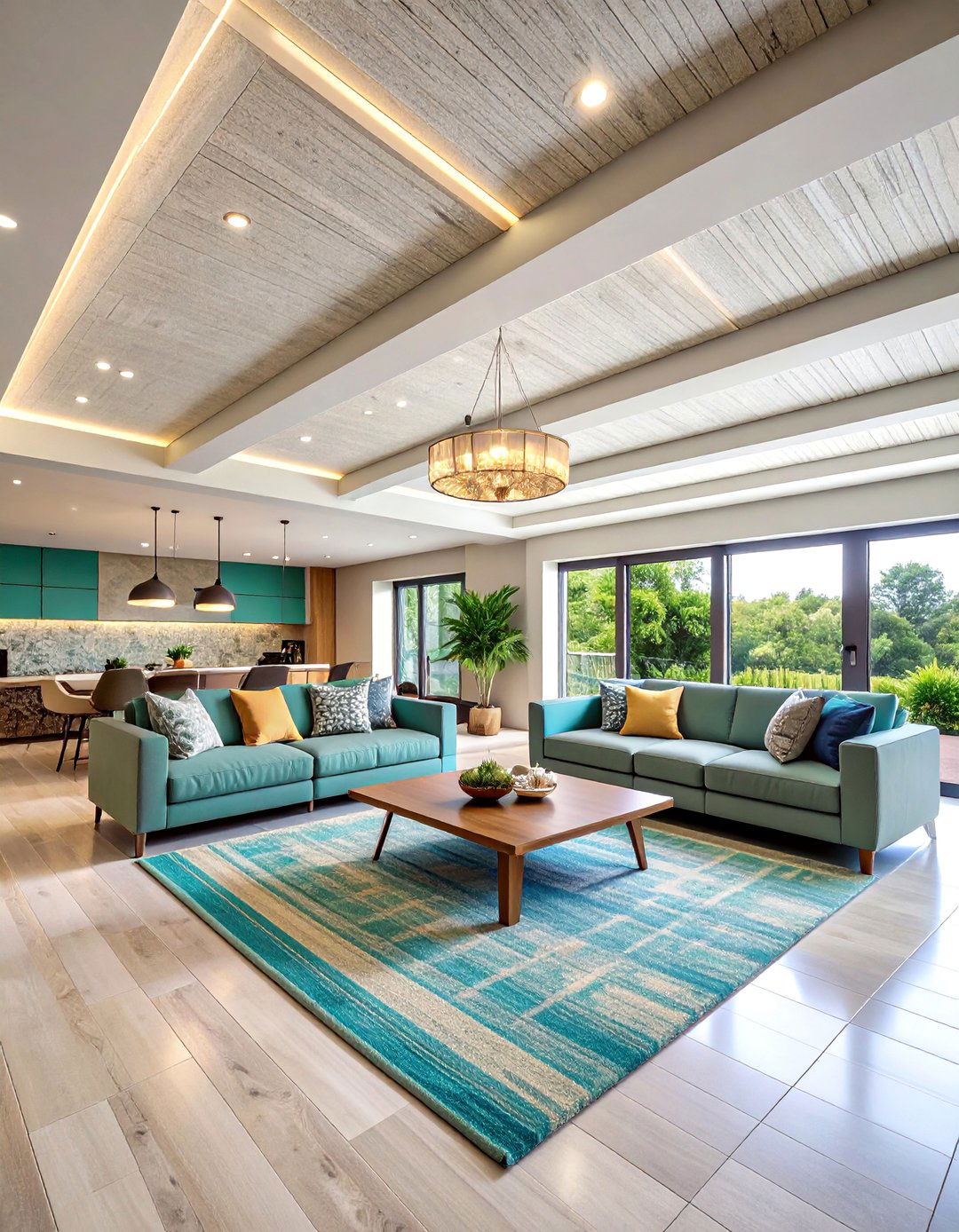
A tried-and-true acoustic mineral-fiber drop ceiling remains a basement workhorse because it knocks down echo by up to 55 percent while blocking upstairs noise transfer by 35 dB, creating a calmer hang-out or office zone. Thanks to lighter main tees that clip together, today’s contractor-grade panels install faster and resist sagging in humid climates. For a quick style upgrade, designers now suggest painting tiles a pale tint that matches the walls—an optical trick that visually raises the ceiling without losing access to wires. With the basics dialed in, you can swap in decorative accent tiles later, making this system the safest starter choice.
2. Moisture-Resistant PVC Tiles Keep Damp at Bay
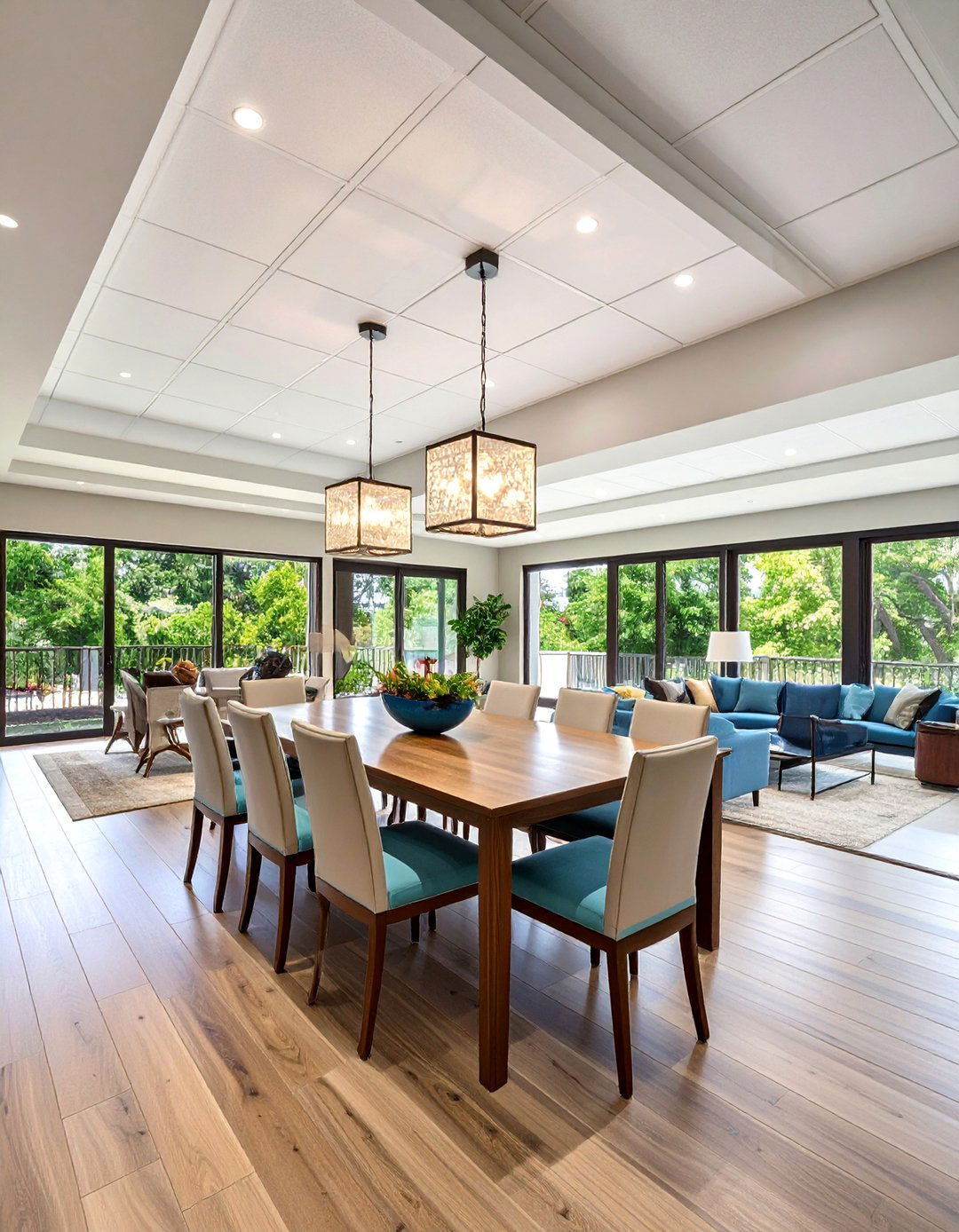
For basements that flirt with humidity, a drop ceiling fitted with PVC tiles rated “moisture resistant” stops mildew before it starts and never stains like paper-faced fiberboard. These lightweight panels wipe clean in seconds and last a decade or more with barely any upkeep, thanks to a tough, non-corroding finish. Because PVC is dimensionally stable, you can pair it with slim 15-millimeter grid hardware to reclaim precious headroom. Choose crisp white for a bright, hygienic look or embossed wood-grain versions that disguise the plastic sheen while still shrugging off basement leaks.
3. Faux-Wood Coffered Ceiling Warms the Space
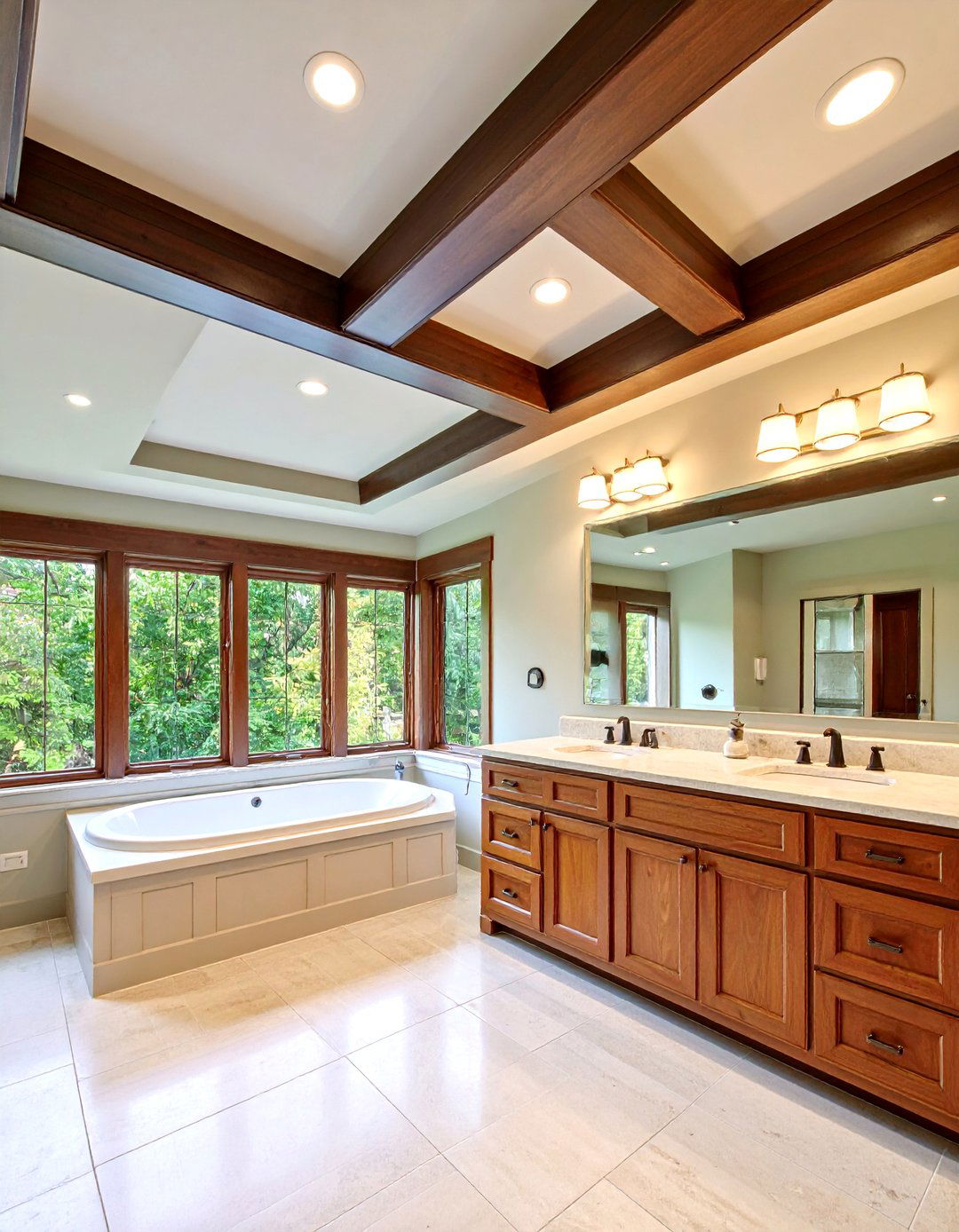
Looking for instant architectural gravitas? A faux-wood coffered drop ceiling delivers classic depth without the weight of real lumber. Low-density beams snap onto the grid to create a checkerboard of recessed panels, echoing Renaissance interiors but weighing one-tenth as much. Smooth polyurethane beams arrive pre-primed; stain them walnut for a pub vibe or paint them white for coastal freshness. DIYers appreciate that the beams conceal minor tile cuts, forgiving measurement slip-ups. When paired with narrow bead moulding and warm LED uplights, the ceiling turns a chilly basement into a snug library or tasting room without compromising access.
4. Industrial Black Grid for Loft-Style Drama
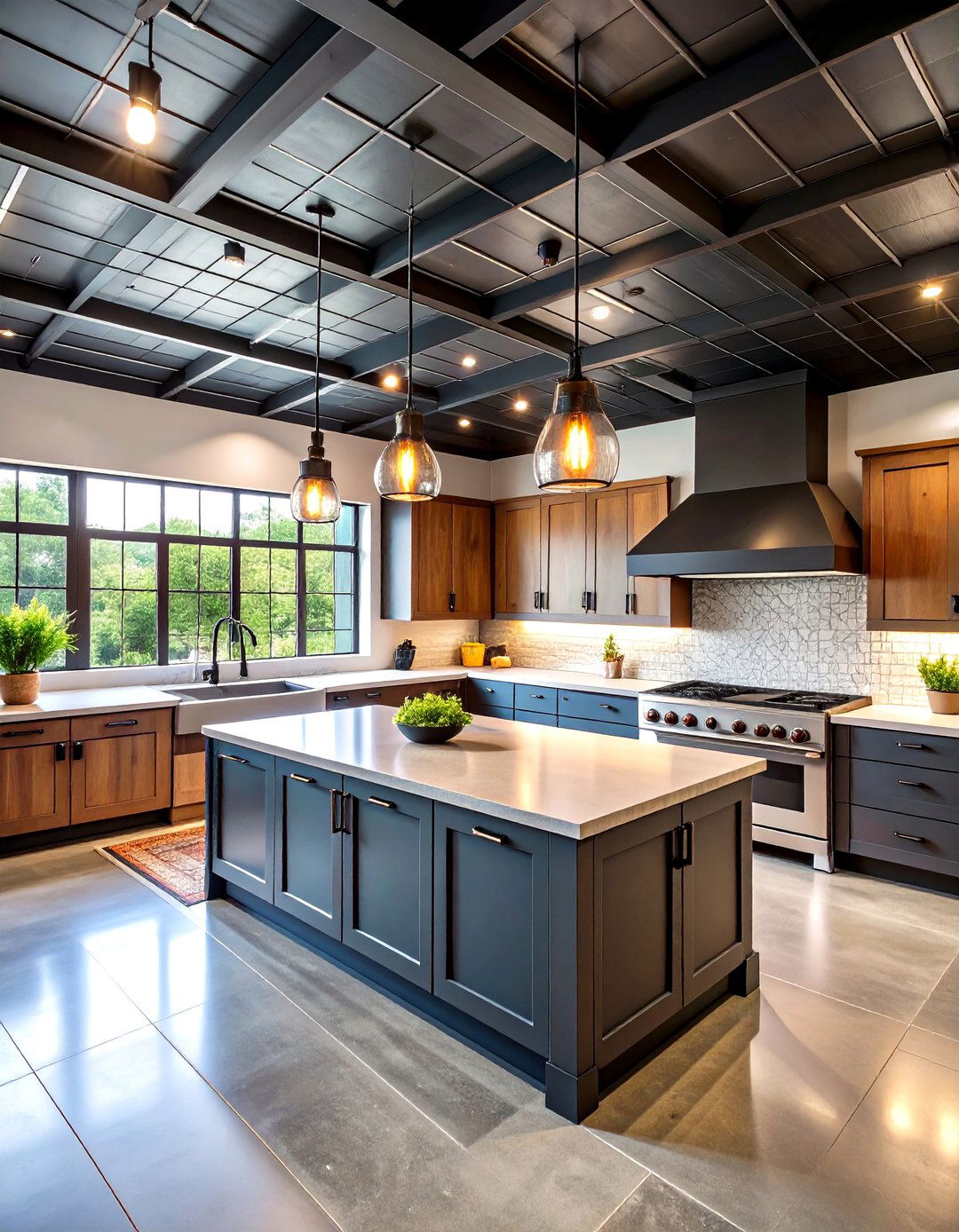
Unlike standard white grids that shout “office,” a matte-black drop ceiling grid paired with matching tiles recasts the basement as an urban loft. The dark plane makes duct runs vanish, spotlighting art and sconces instead. Designers recommend satin black rather than high gloss to limit reflected glare and to hide dust between cleanings. Add warm Edison pendants and polished-concrete floors and you’ve captured the contemporary industrial trend for a fraction of the cost of exposed joists, all while preserving the grid’s quick-lift service panels.
5. Integrated LED Flat Panels Light Every Corner
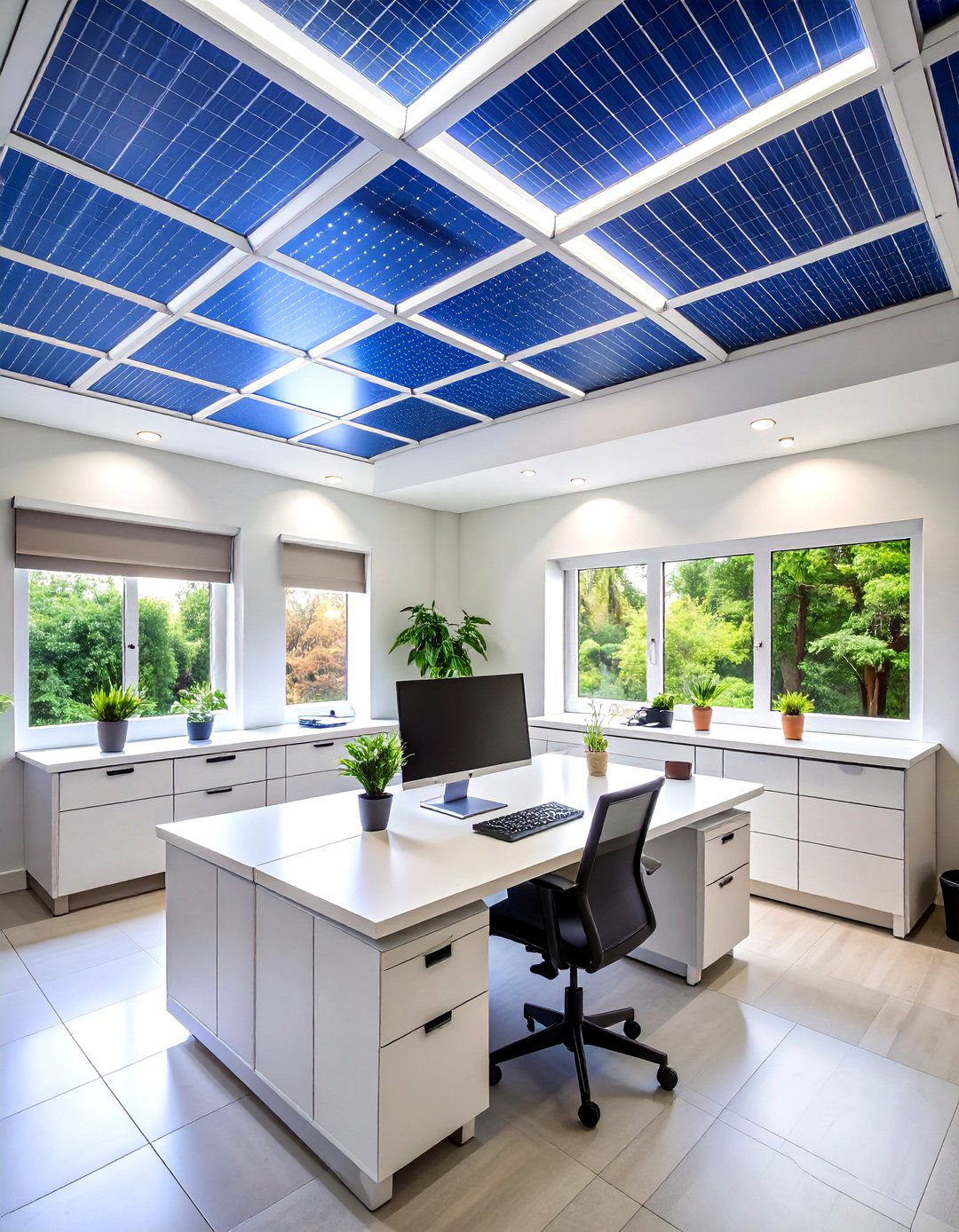
For basements starved of daylight, slim 1×4 ft or 2×2 ft LED flat panels that drop straight into the grid bathe the room in a uniform, no-shadow glow while slashing energy use by two-thirds. These fixtures wire into the existing run and sit flush with adjacent tiles, so ceiling height stays intact. Homeowners on forums report fast swaps, often reusing the fixture’s whip for a code-compliant connection. Look for color-selectable drivers (3000–5000 K) so the basement can morph from cinema-warm to daylight-bright craft space at the flick of a switch.
6. Tin-Look Panels Add Vintage Sparkle
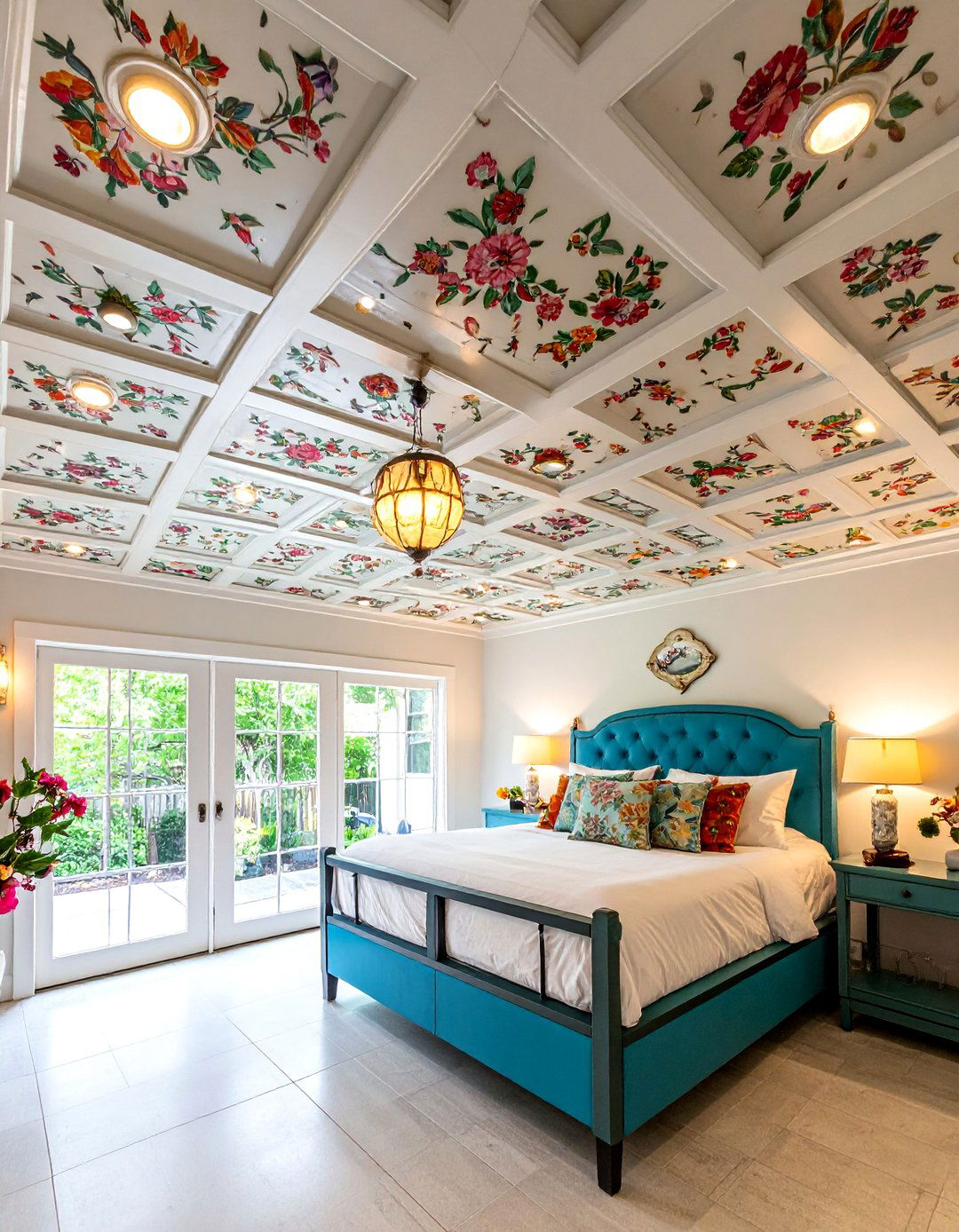
Pressed-metal ceilings once signaled Gilded-Age elegance; now light PVC replicas bring the same intricate pattern into basements without rust worries. Antique-flower and diamond-plate motifs drop into a standard grid and gleam under accent bulbs, bouncing light deeper into the room. Faux-tin panels stay under one pound each, so they won’t stress the hanger wire, and many carry Class A fire ratings. Paintable versions let you age panels with bronze glaze or keep them bright silver for a retro soda-shop vibe. Designers tout them as the quick way to turn a humdrum ceiling into a conversation starter.
7. Bold Paint for Color-Blocked Personality
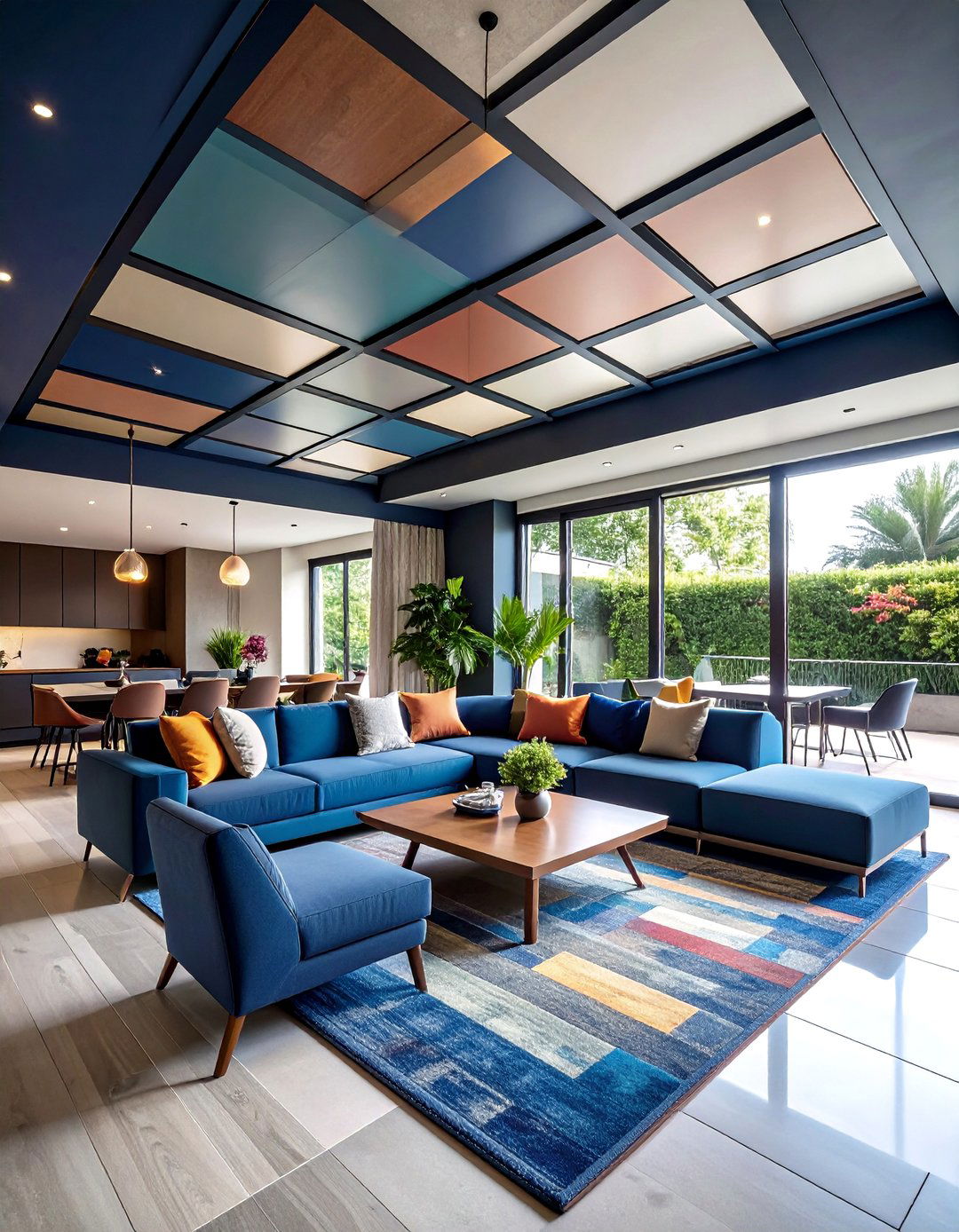
As trends pivot toward expressive interiors, homeowners are breaking the white-tile rule and rolling rich color across drop-ceiling panels. A deep navy grid paired with slightly lighter tiles, for example, frames the room and visually widens the walls. Designers say matte finishes hide grid seams better than satin and still bounce lamp light. For renters, removable peel-and-stick vinyl decals let you trial geometrics without risking the security deposit. Painting also masks age spots on legacy tiles, extending their life and saving landfill space.
8. Patterned Wallpaper Tiles for Instant Art
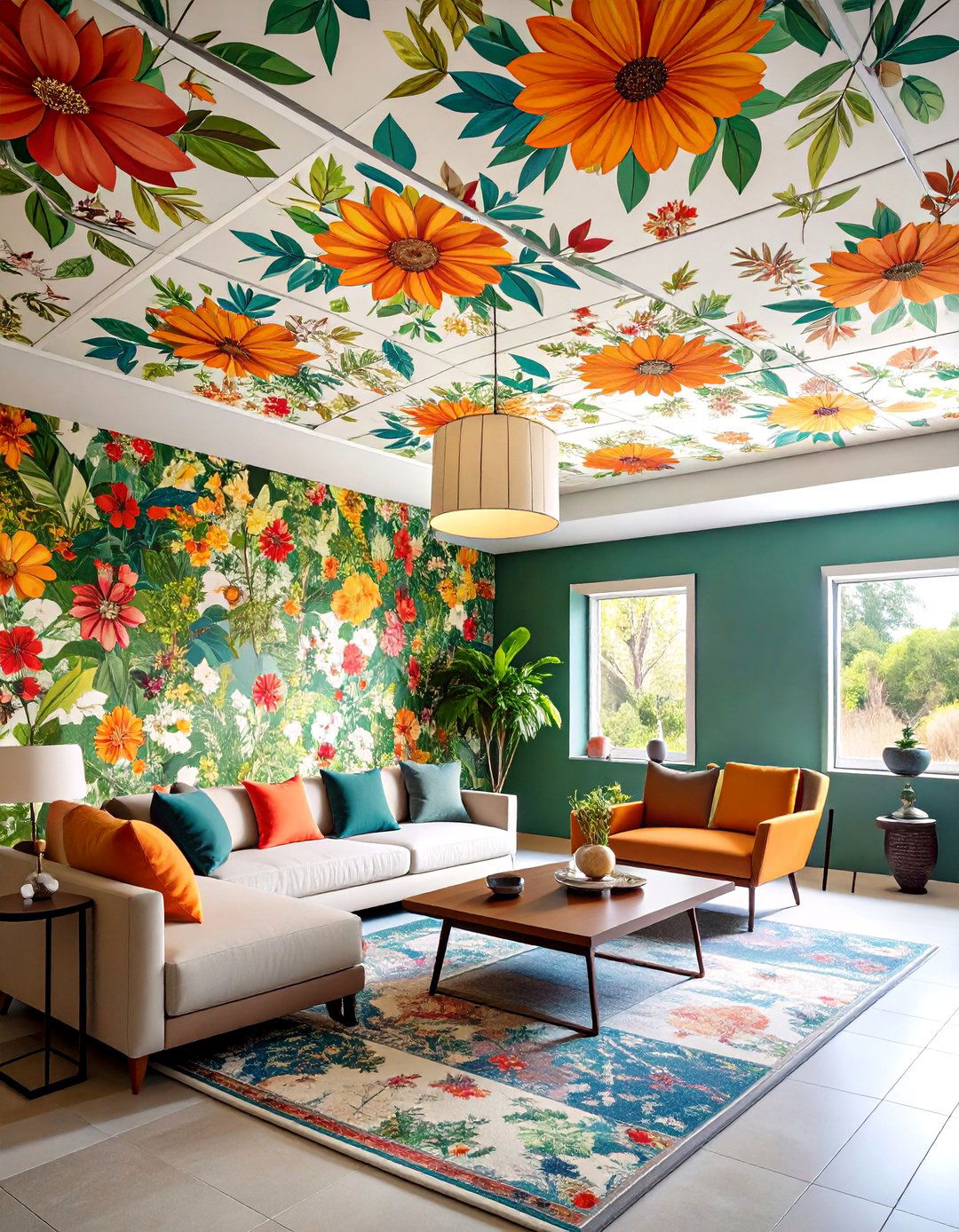
Wallpaper isn’t just for walls: peelable, fire-rated wallpaper applied to mineral-fiber tiles pops them with botanical prints, herringbone, or faux-plaster murals. Because each tile lifts individually, matching patterns stays simpler than handling full sheets overhead, and you can rotate misaligned pieces in seconds. Protective matte sealers fend off basement moisture while keeping colors vivid. Pair busy ceilings with simple furnishings so the eye has a place to rest, and remember that patterned drop-in tiles still lift free for pipe repairs.
9. Floating Cloud Panels Soften Acoustics
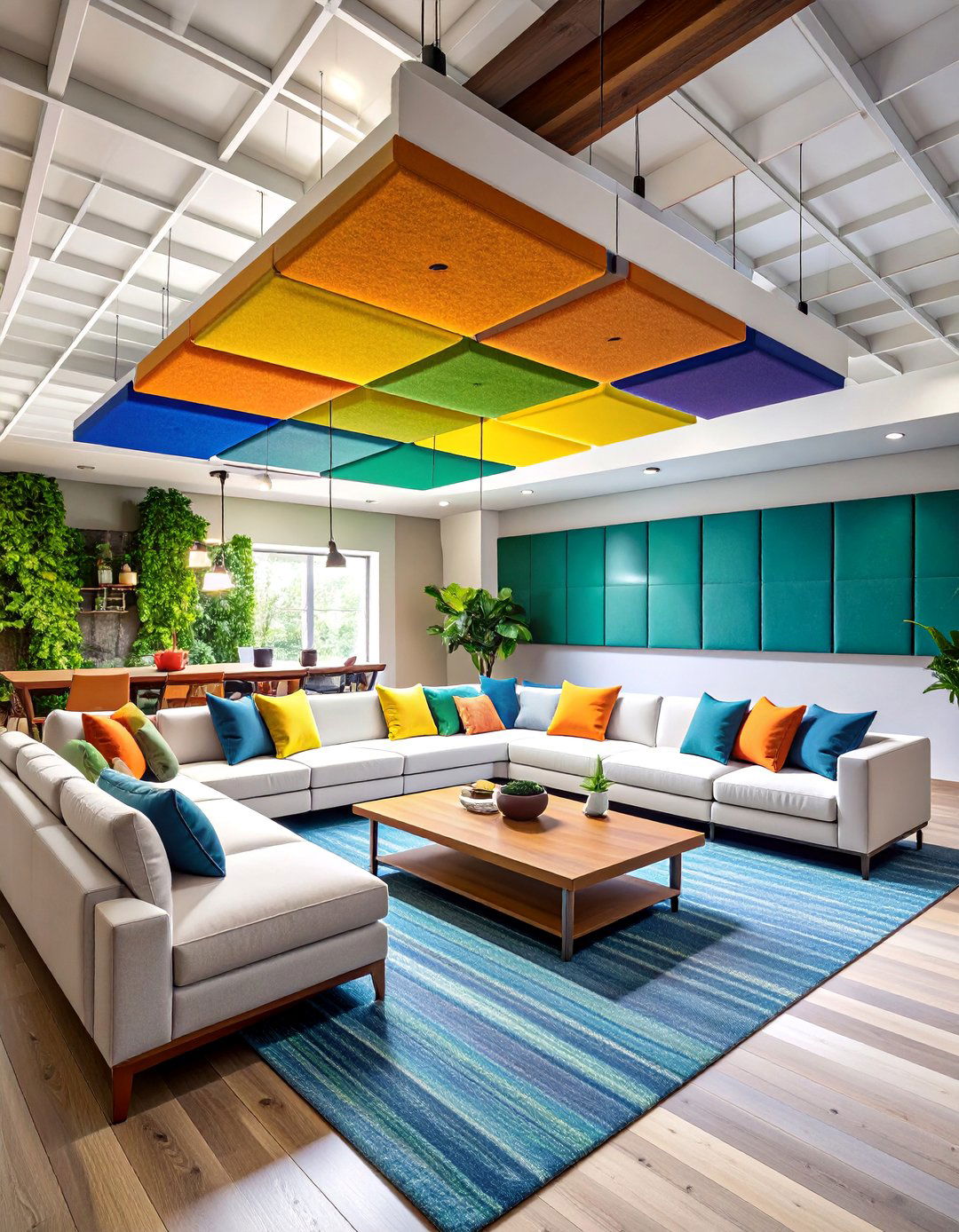
With open-concept basements, suspended “cloud” panels—large acoustic rectangles hung two inches below the main grid—break up reverberation and sculpt dynamic ceiling lines. Manufacturers rate felt-wrapped clouds at NRC 0.85 and higher, absorbing 85 percent of incident sound. Stagger them at different heights for a gallery feel, or align them over the sectional to delineate a lounge zone without walls. The gap above each island lets HVAC airflow circulate freely, so comfort isn’t sacrificed for style.
10. Mixed-Size Grid Creates Subtle Rhythm
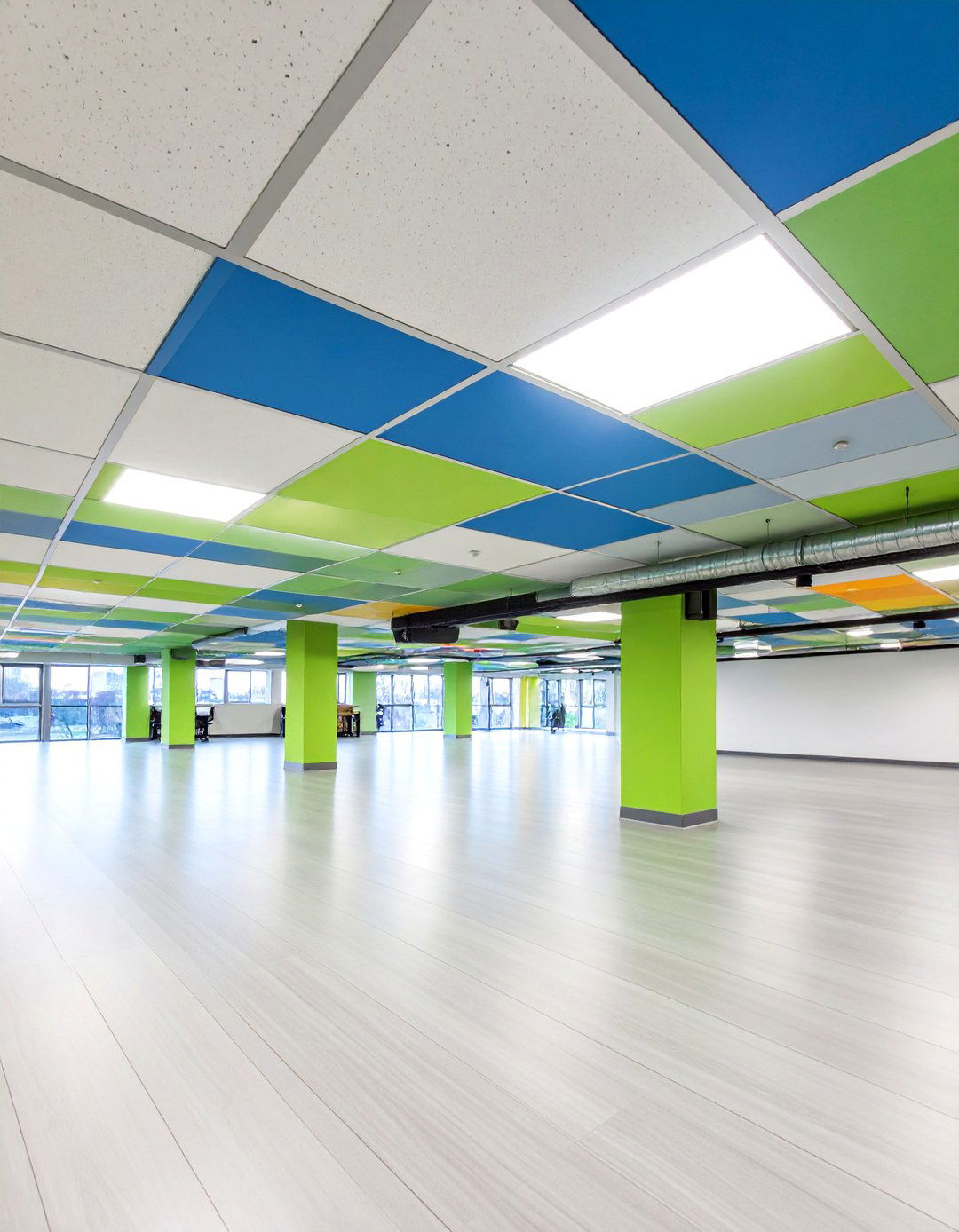
Traditional basement drop ceilings rely on either 2×4 ft or 2×2 ft openings, but alternating the sizes inside one grid introduces gentle pattern without extra material. Standard T-bar kits already include knock-outs for both sizes, so you simply vary the cross-tee spacing during install. Pair larger rectangles above circulation paths for an airy feel and denser squares above workstations for visual focus. Home-improvement centers stock diffuser panels and light fixtures in both formats, making bulb replacement straightforward.
11. Drop Grid Meets Faux Exposed Beams
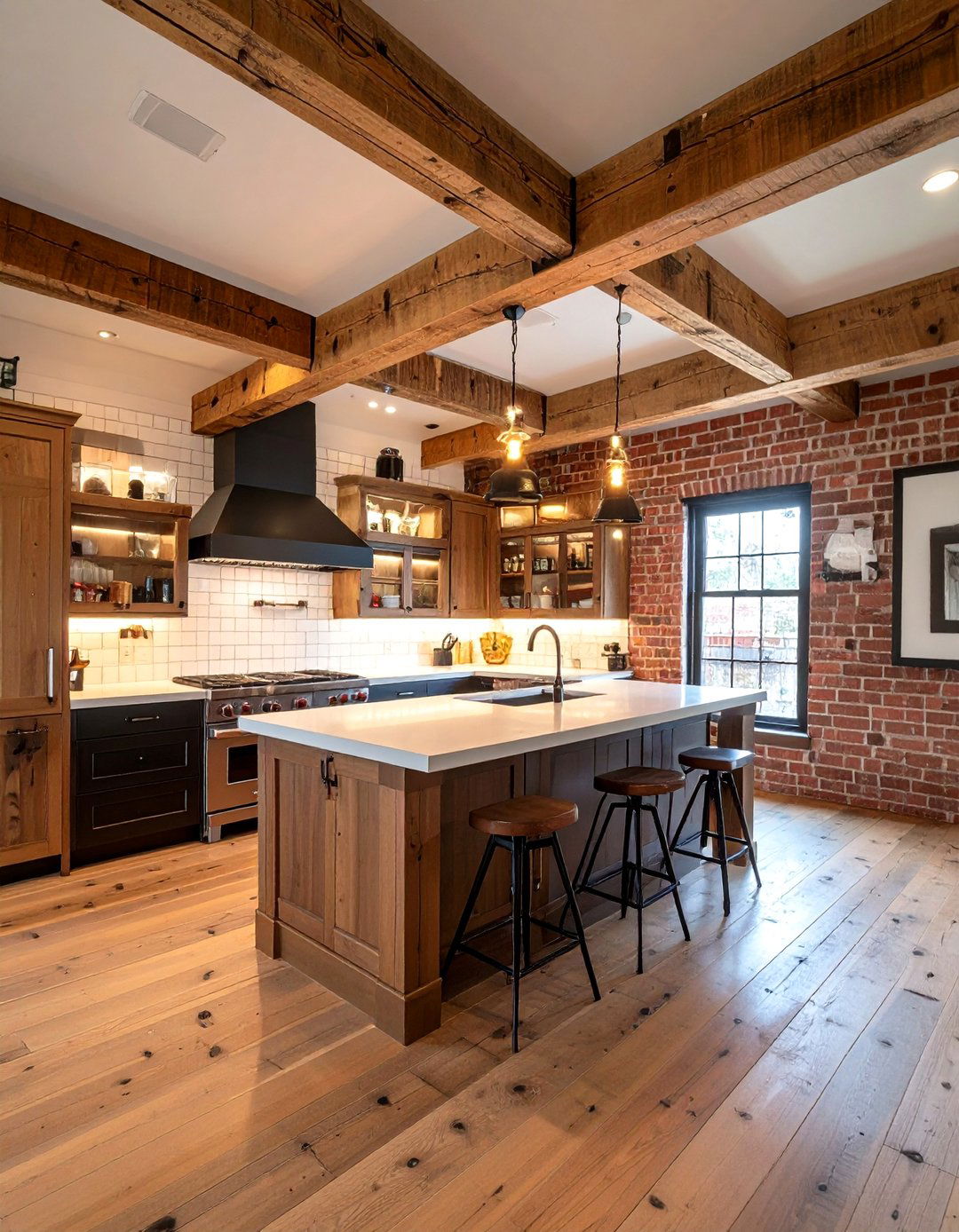
Take the coffered concept further by running lightweight faux beams perpendicular to joists, then recessing standard grid hardware between beams so utilities stay reachable. Foam or polyurethane beams weigh less than two pounds per linear foot yet mimic old-growth timber once stained. Using matching filler strips where beams cross hides hanger wires, and slim puck lights nestled in cavities create moody spots on brick or artwork. The finished ceiling sells the illusion of structural heft even in new construction.
12. High-NRC Tiles Craft a Basement Theater
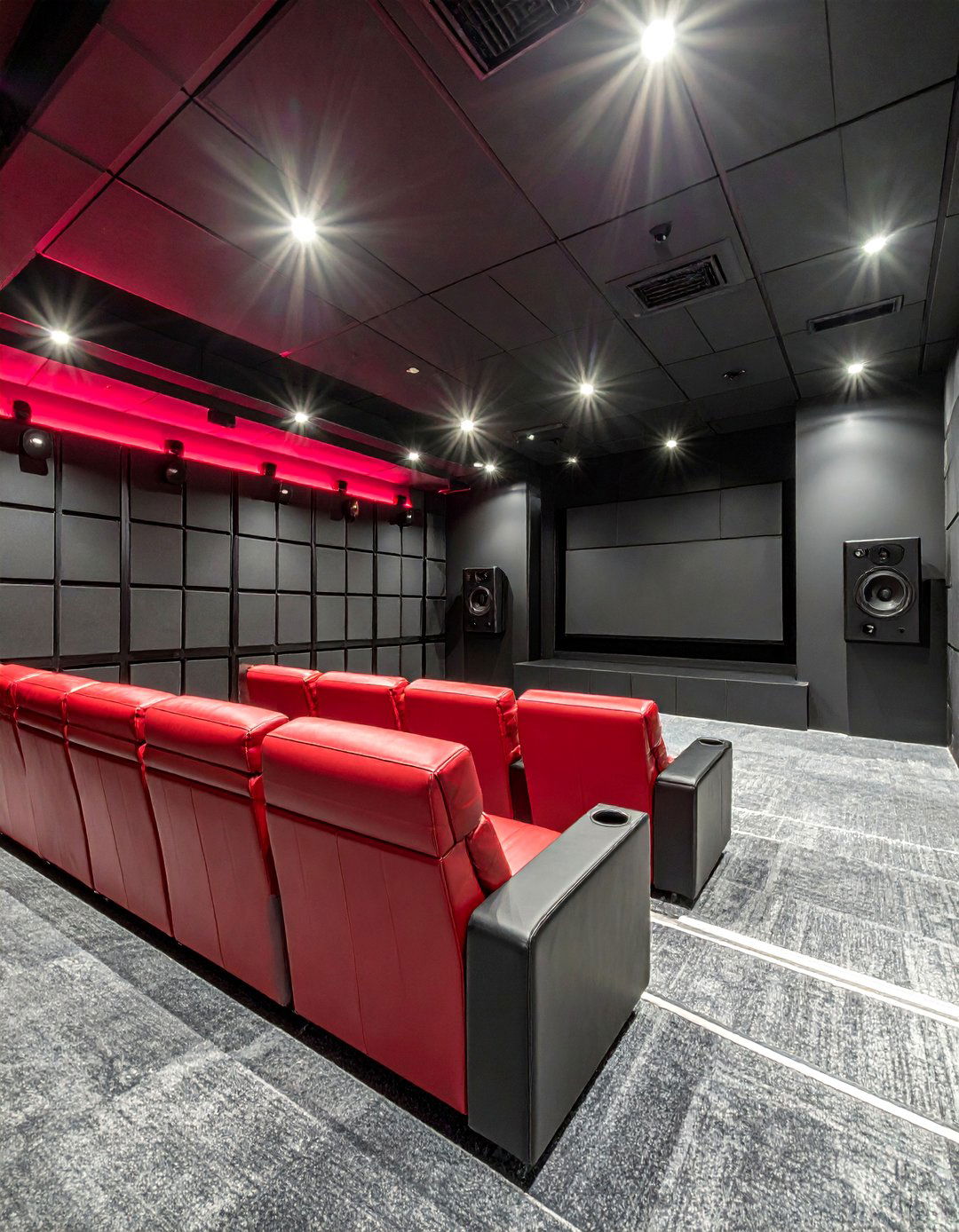
Movie nights sound richer when ceiling tiles rated NRC 0.90 or better soak up mid-range reflections and stop sub-bass from rattling upstairs bedrooms. Choose black or charcoal tiles to minimize screen glare and drop the grid to mount in-ceiling Atmos speakers. One manufacturer’s data shows premium acoustic panels cutting perceived loudness by up to 70 percent, so you can crank explosions without waking the toddler. Finish with dimmable LED troffers fitted with cinema-red gels for that authentic theater glow.
13. Translucent Diffuser Panels Mimic Skylight Glow
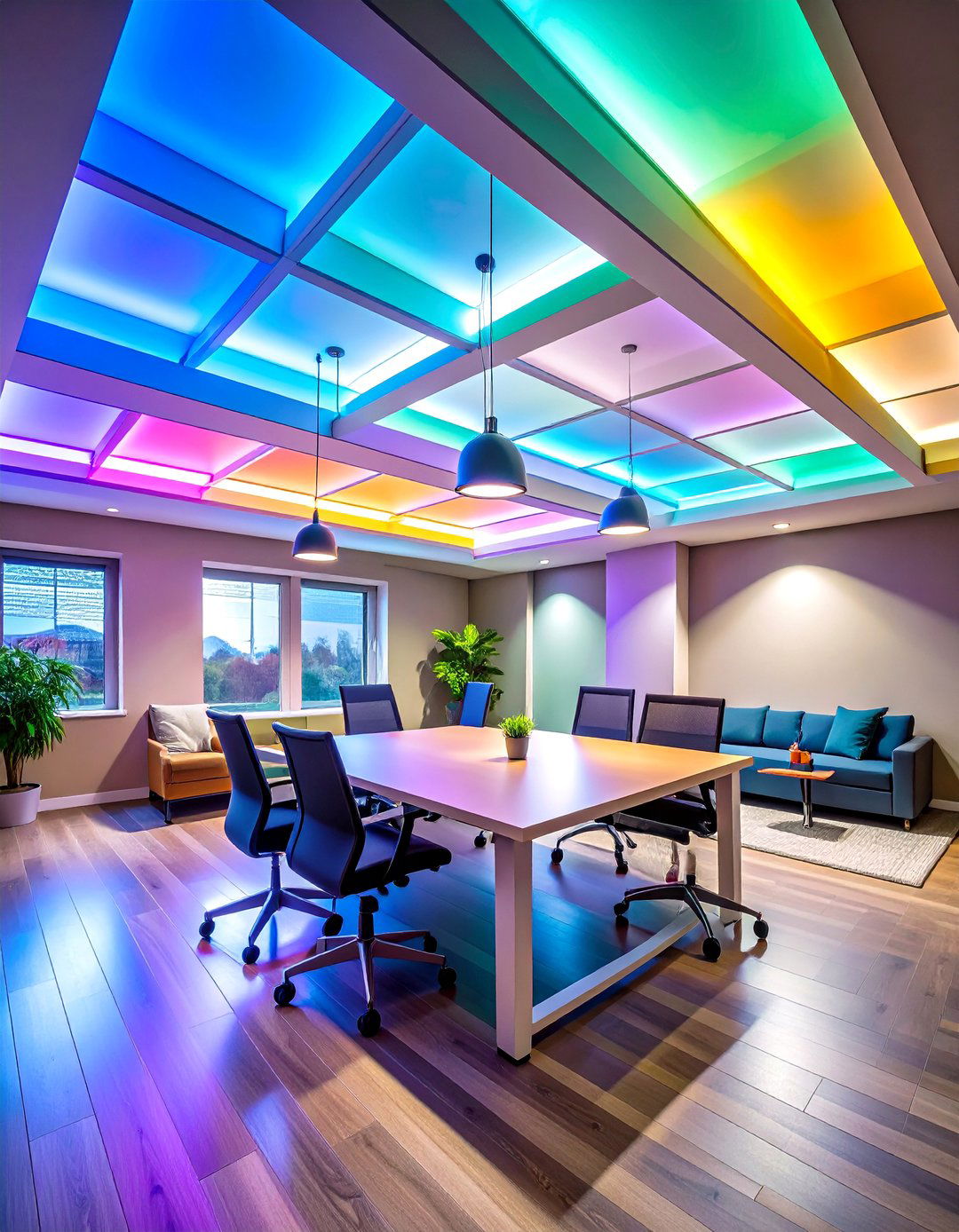
Acrylic prismatic diffuser panels slipped into a standard grid scatter LED or fluorescent light, faking daylight in below-grade rooms. Off-the-shelf sheets in 2×4 ft or 2×2 ft sizes trim with a utility knife, then rest directly on tees. Frosted versions soften glare, while cracked-ice textures hide bulbs completely. Retailers also sell insert-ready egg-crate louvers that vent heat and keep occupants from staring into fixtures. By mixing clear panels over desks and frosted panels elsewhere, you tailor brightness to each zone.
14. Photo-Printed Panels Personalize the Ceiling
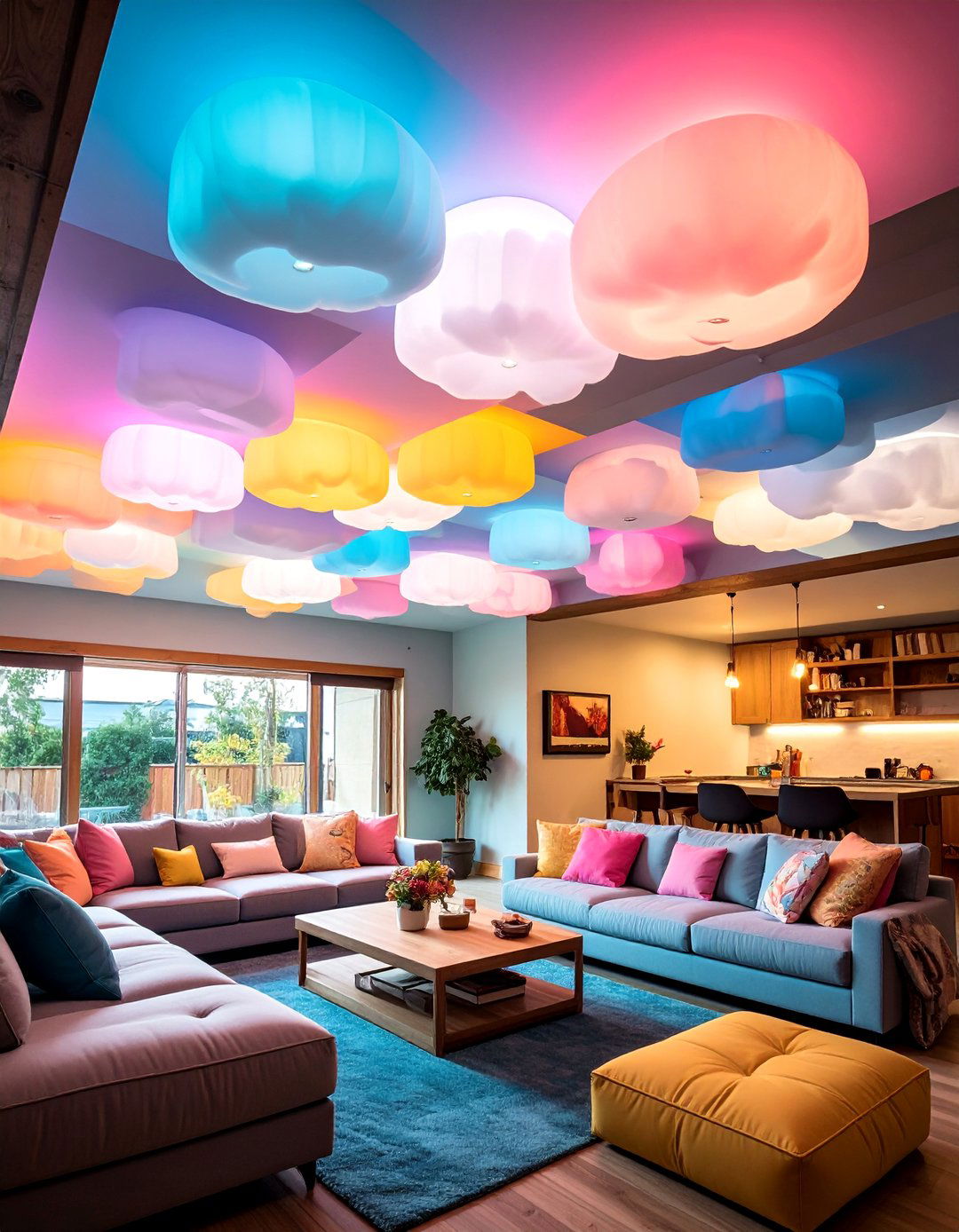
Nature-print LED diffuser sets—think blue sky and fluffy clouds—slot into grids to give windowless basements an uplifting view overhead. Fabric-wrapped acoustic panels printed with custom graphics take personalization further, letting hobbyists showcase maps, album art, or team logos while taming echo. Because imagery resides on replaceable tiles, the room can evolve from nursery to teen lounge without drywall dust.
15. Beadboard Drop-In Panels for Cottage Charm
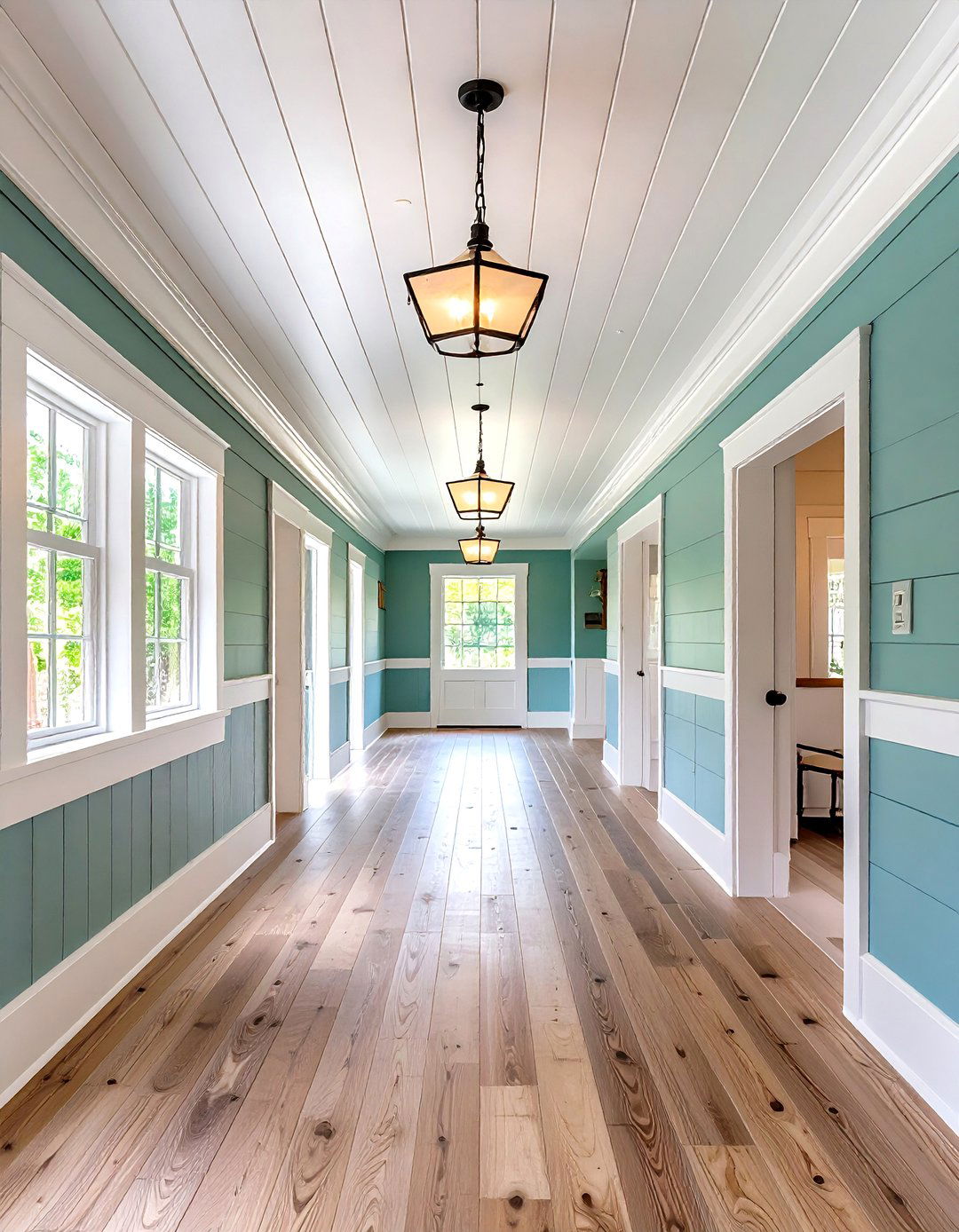
White beadboard drop-ceiling planks brighten dark corners and pair naturally with shiplap walls, channeling breezy coastal cottages even in landlocked basements. Brands mold lightweight MDF or PVC panels with classic 2-inch beads that tuck into standard tees. Designers prize the board-and-batten illusion for hiding grid lines, and DIY tutorials show how to rip sheets into strips and nail them onto existing tiles to save cost. Touch-up paint blends seams, leaving a seamless expanse that feels handcrafted, not commercial.
16. Tray-Style Recess with LED Cove Glow
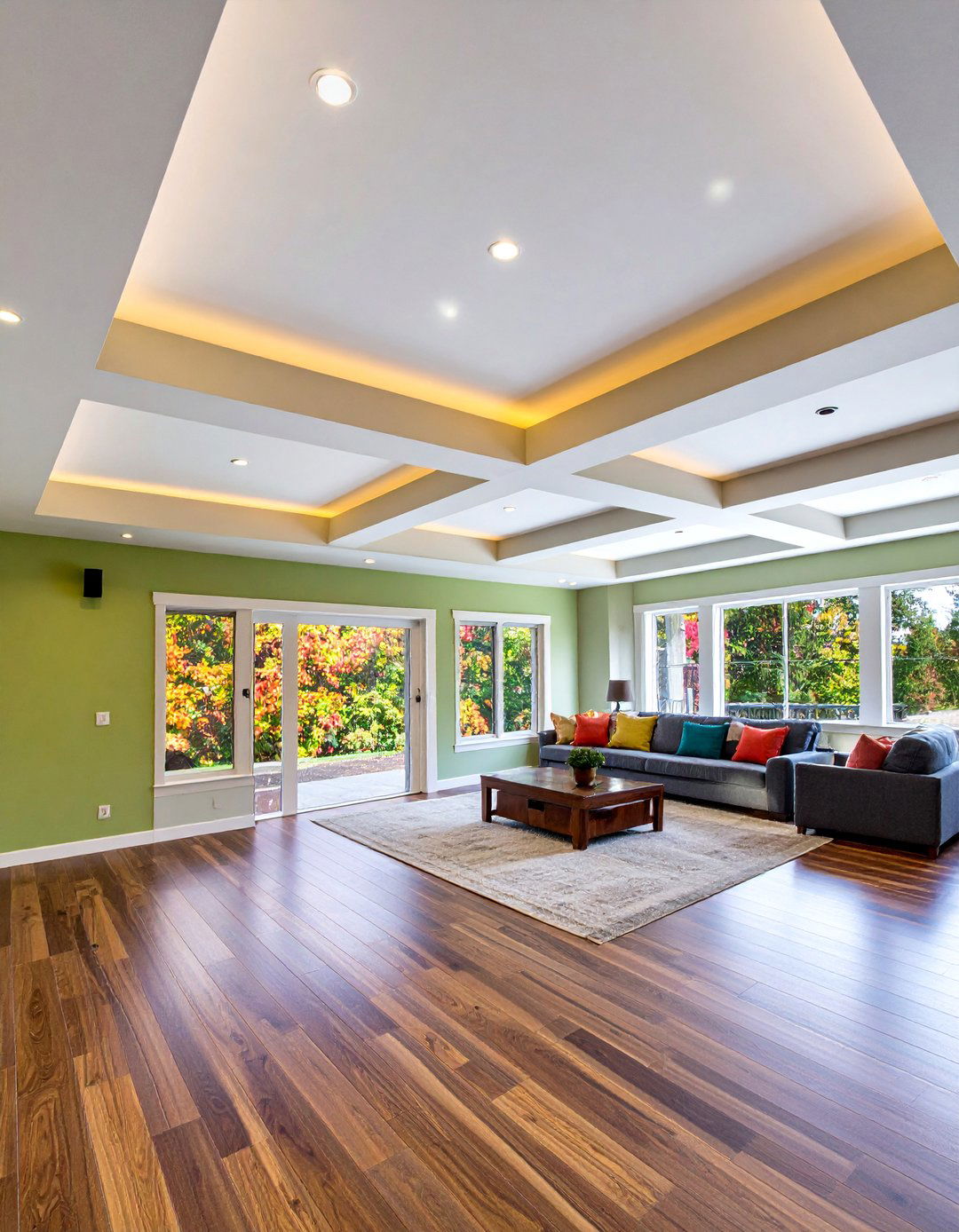
By furring the perimeter grid down two inches and leaving the center section higher, you form a tray ceiling that looks custom-built. Lay flexible LED strip tape on the upper lip so light washes the new “cove” and makes basement ceilings appear taller. Choose strips with 90+ CRI for accurate colors and link them to a smart dimmer for movie-night fades. Basement lighting guides applaud tray coves for adding ambient light without head-bumping fixtures, crucial in spaces with seven-foot clearances.
17. Stretch-Fabric Panels Create a Seamless Canvas
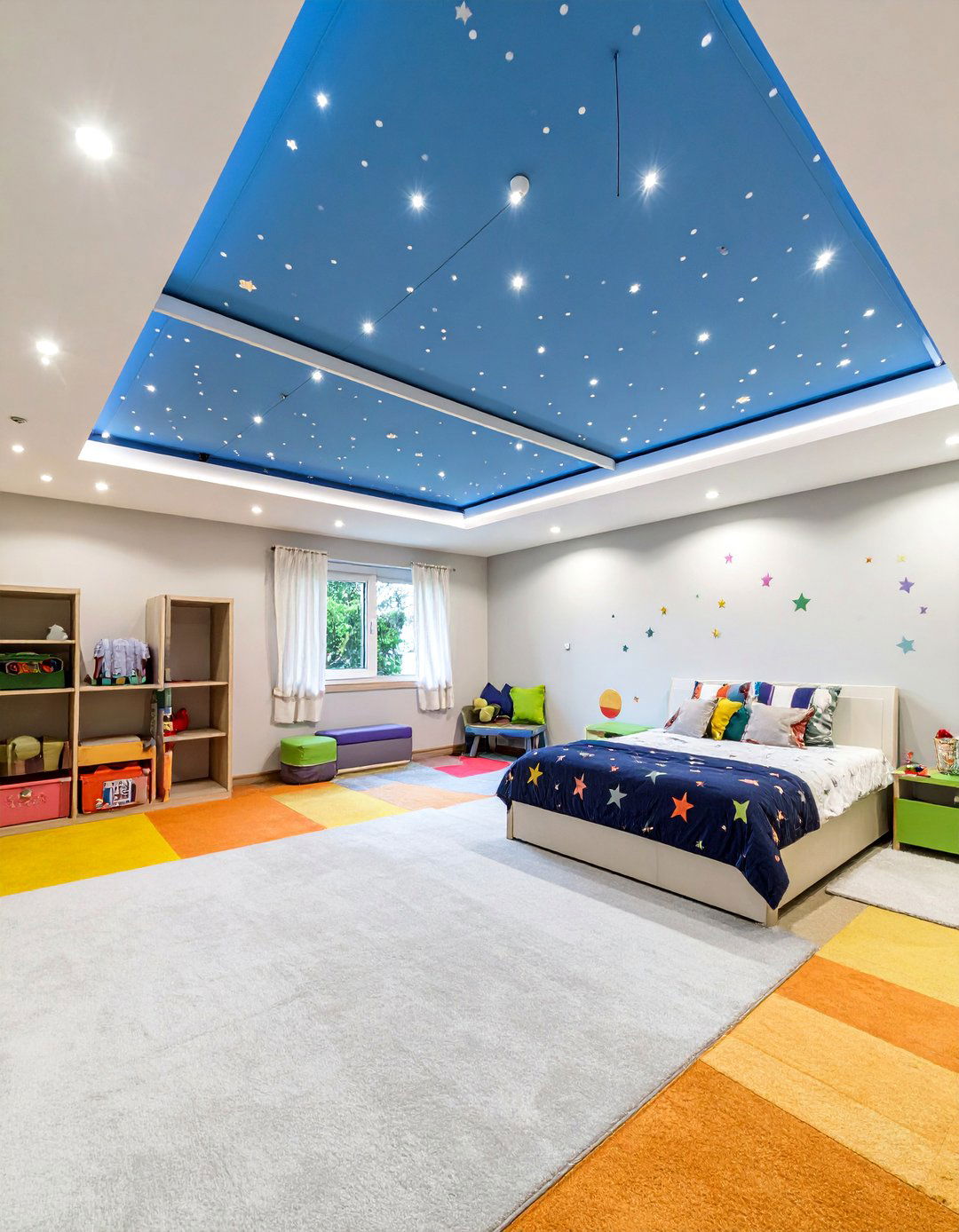
Tensioned-fabric ceilings span wall-to-wall in one piece, clipping to aluminum track just below joists. Fire-rated polyester film blocks dust and hides pipes, yet a zipper later reveals utilities. Leading fabric systems come in 230 colors, printed patterns, or micro-perforations that boost acoustics to NRC 0.75. Installers praise the lightweight membrane for following curved bulkheads, impossible with rigid tiles. Fabric panels also accept embedded LEDs, so you can embed galaxy effects inside a playroom.
18. Earth-Tone Felt Tiles for a Cozy Nook
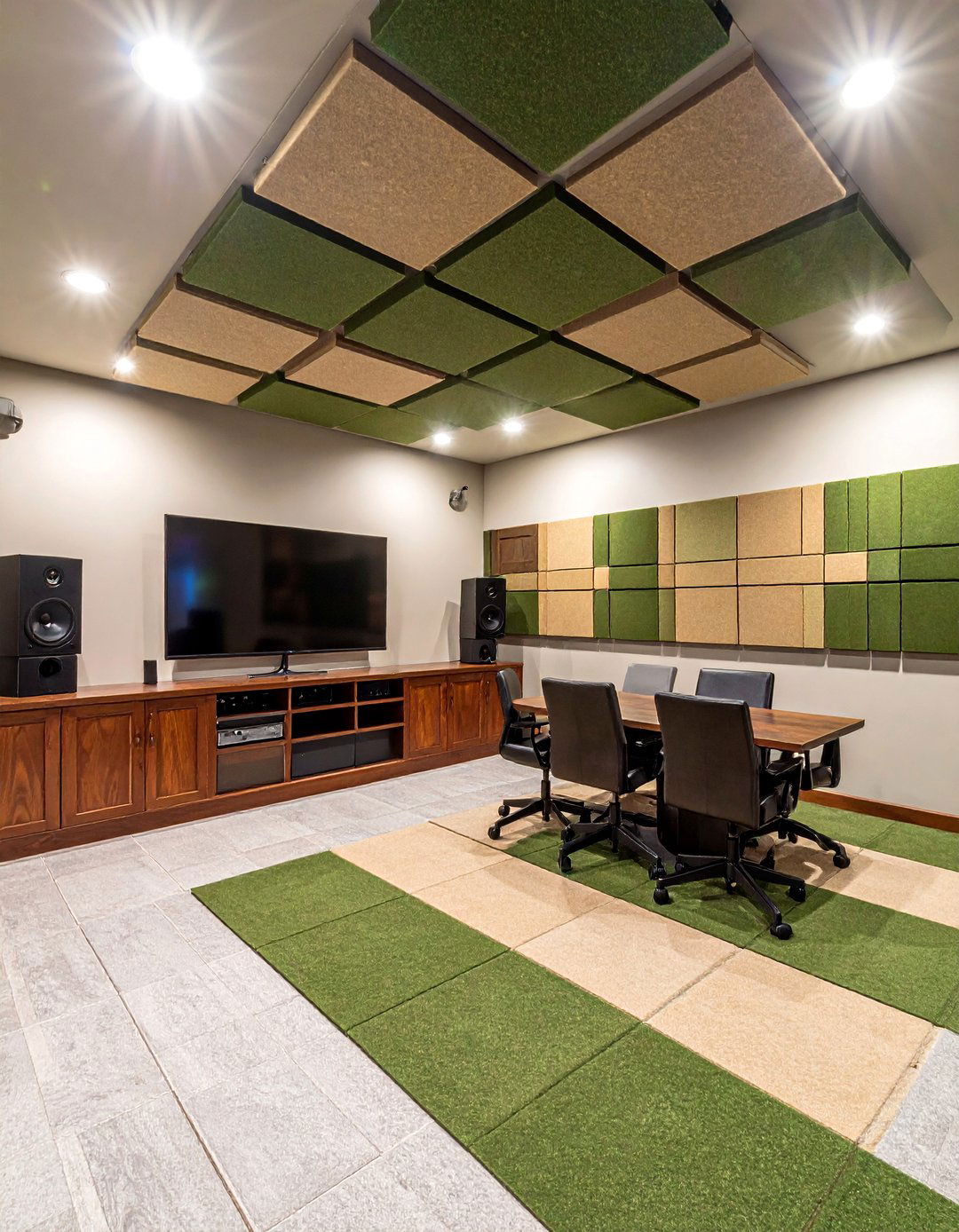
Acoustic felt tiles in muted moss, adobe, or charcoal slip into ordinary grids yet read like upscale millwork, softening echoes while warming the palette. One manufacturer’s baffles cut mid-band reverberation by half, making game-night chatter clearer. Because the polyester felt is made from recycled plastic bottles, it’s a smart sustainability pick, and its color goes through the fiber, so scratches vanish. Pair two coordinating earth tones in a checkerboard to add depth without overwhelming a small media room.
19. Magnetic Snap-In Panels for Hassle-Free Access
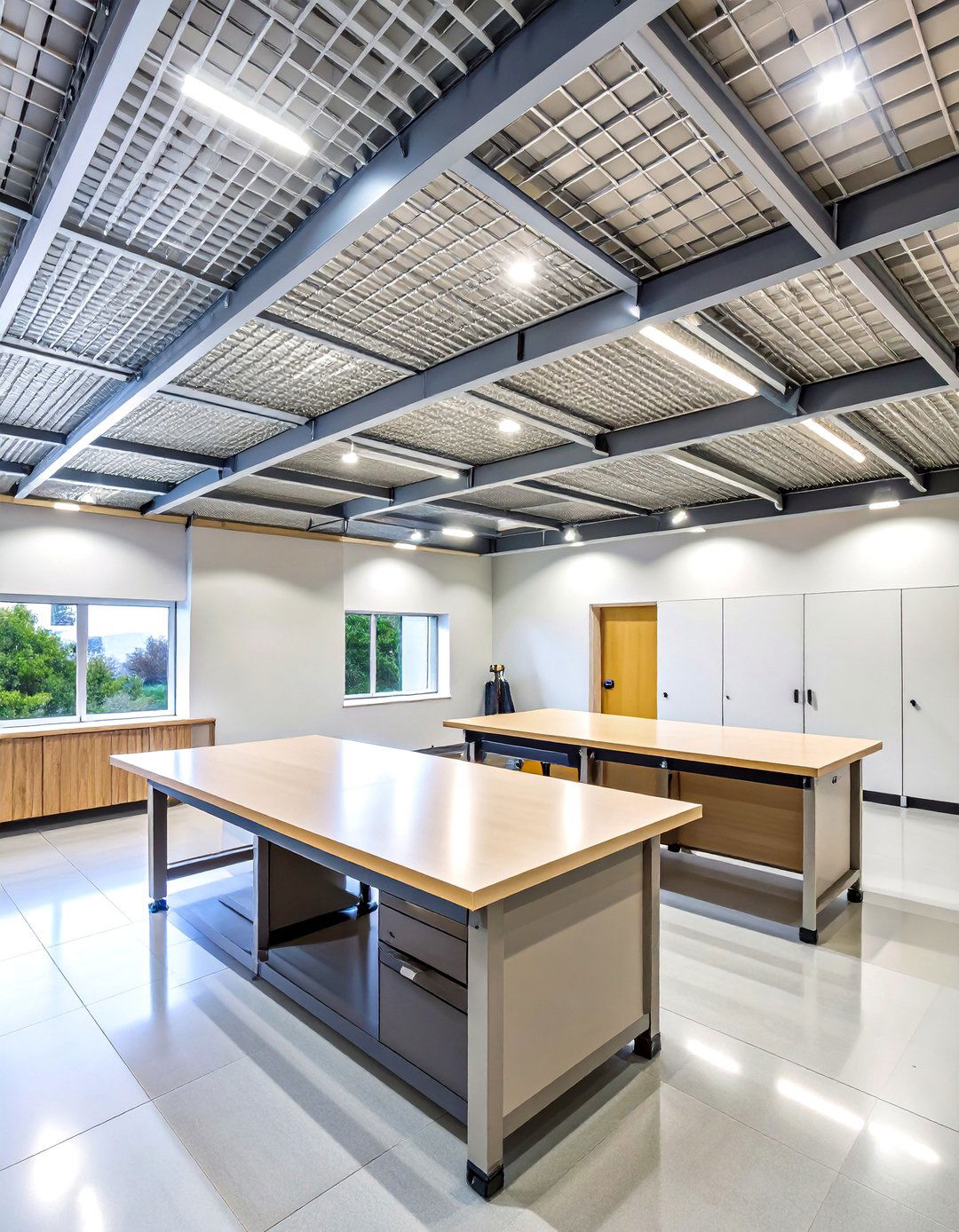
Inventive snap-in ceiling tiles embed rare-earth magnets that grip a thin steel grid, letting panels pop out with zero tools when leaks strike. Home-theater builders praise the system for combining the smooth look of drywall with the serviceability of a drop ceiling. Mold- and sag-resistant mineral panels rated for basements ensure longevity, and integrated pull tabs keep fingernails clean. Regular grid hanger wire still supports everything, so retrofits swap easily into existing sub-rooms.
20. Eco-Smart Tiles Close the Loop
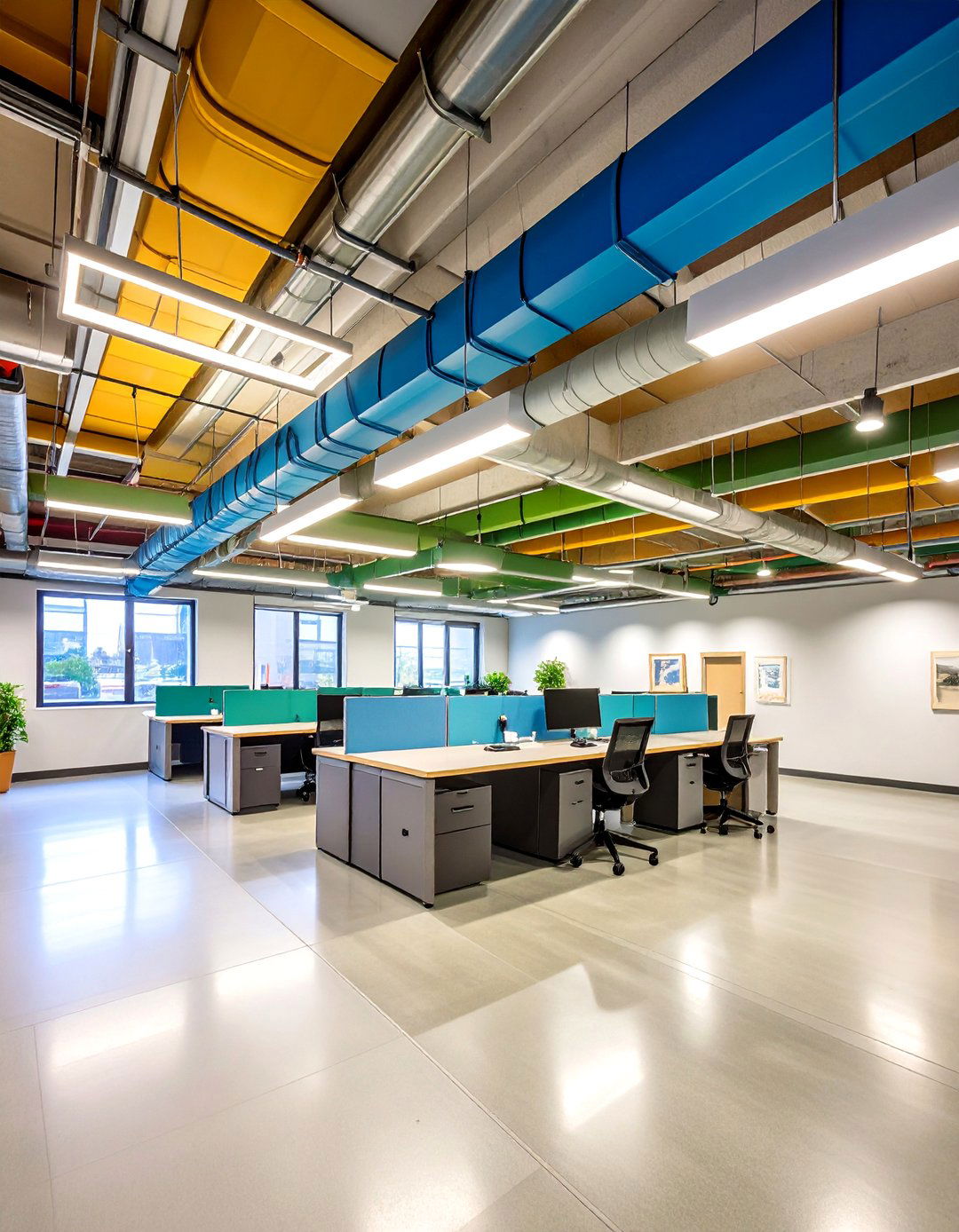
If sustainability tops your checklist, choose ceiling panels made from 70–100 percent post-consumer content, certified GreenGuard Gold for low VOCs. Manufacturers now reclaim fiber waste from construction sites, press it into new drop-in tiles, and offer recycling take-back programs once panels retire. One collection even lists the exact recycled percentage on the box so specifiers meet green-building credits. Pair these tiles with energy-efficient LEDs and you’ve built a basement ceiling that’s kind to both ears and the planet.
Conclusion:
From classic mineral-fiber panels to futuristic stretch-fabric canopies, today’s basement drop ceiling ideas prove that practicality and panache can share the same grid. By choosing materials tailored to your space—PVC for damp zones, acoustic felt for theaters, faux wood for warmth—you solve functional challenges while expressing style. Add smart lighting, sustainable content, or vintage tin textures, and the once forgotten “fifth wall” becomes a design asset that lifts the entire underground level.


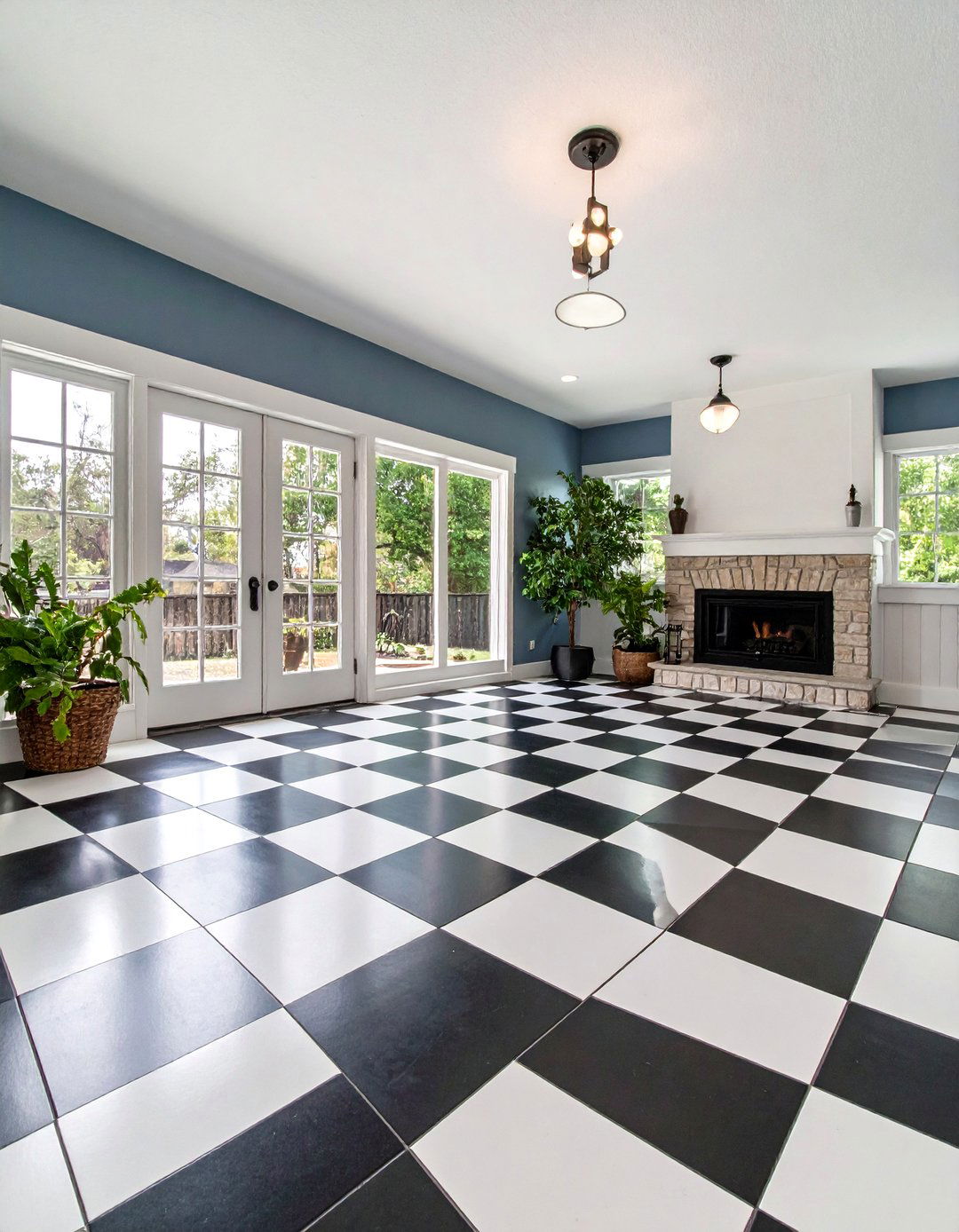
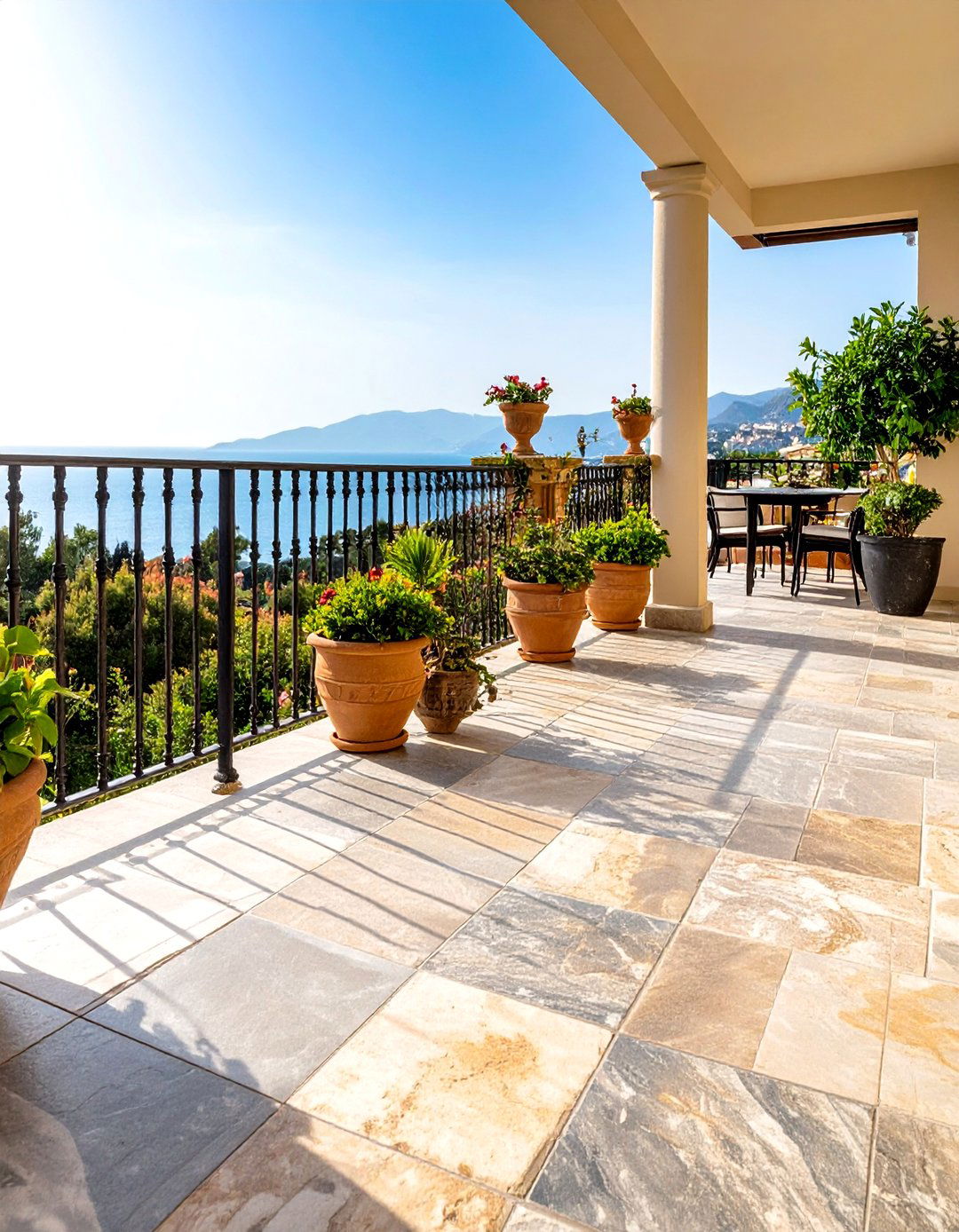
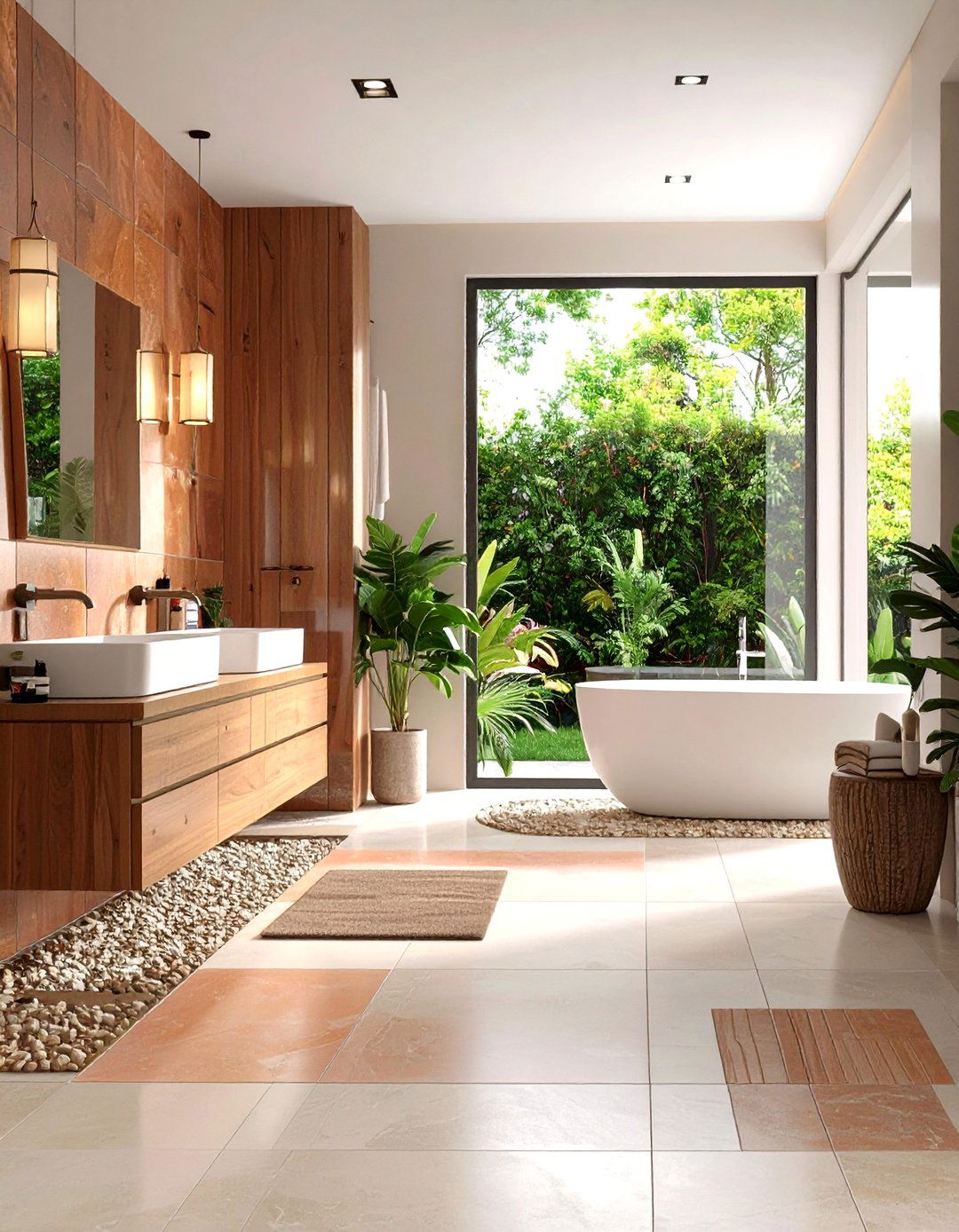


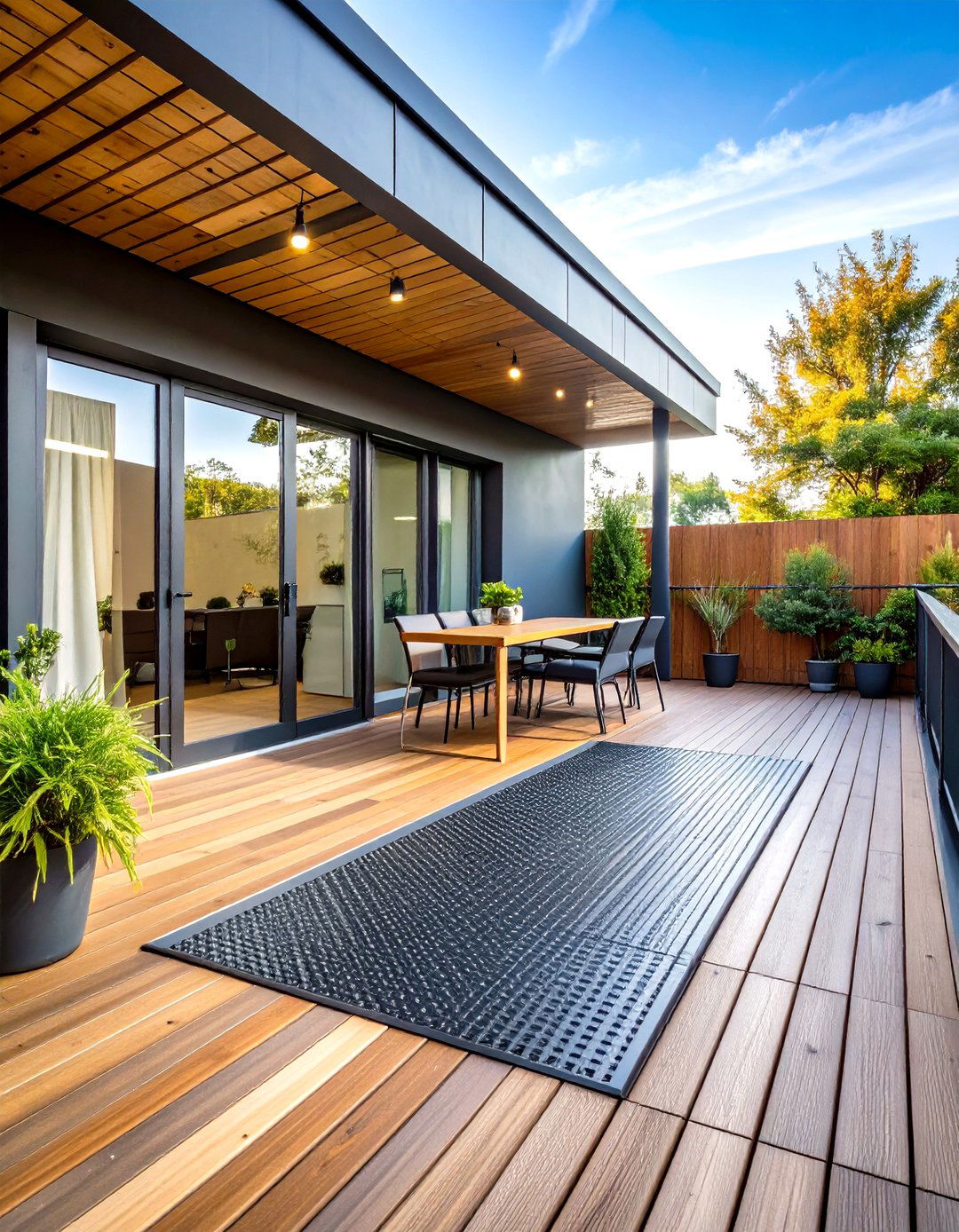
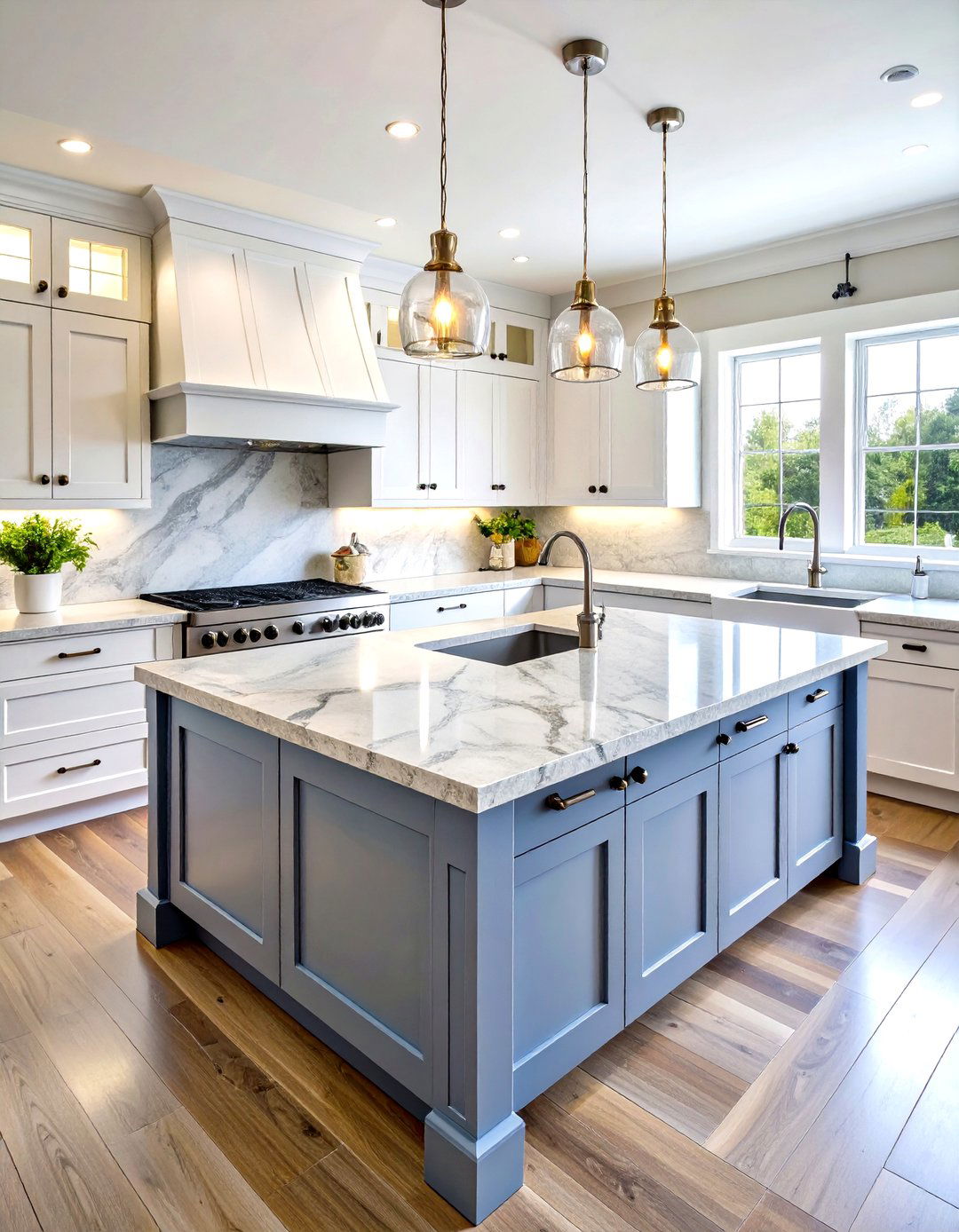
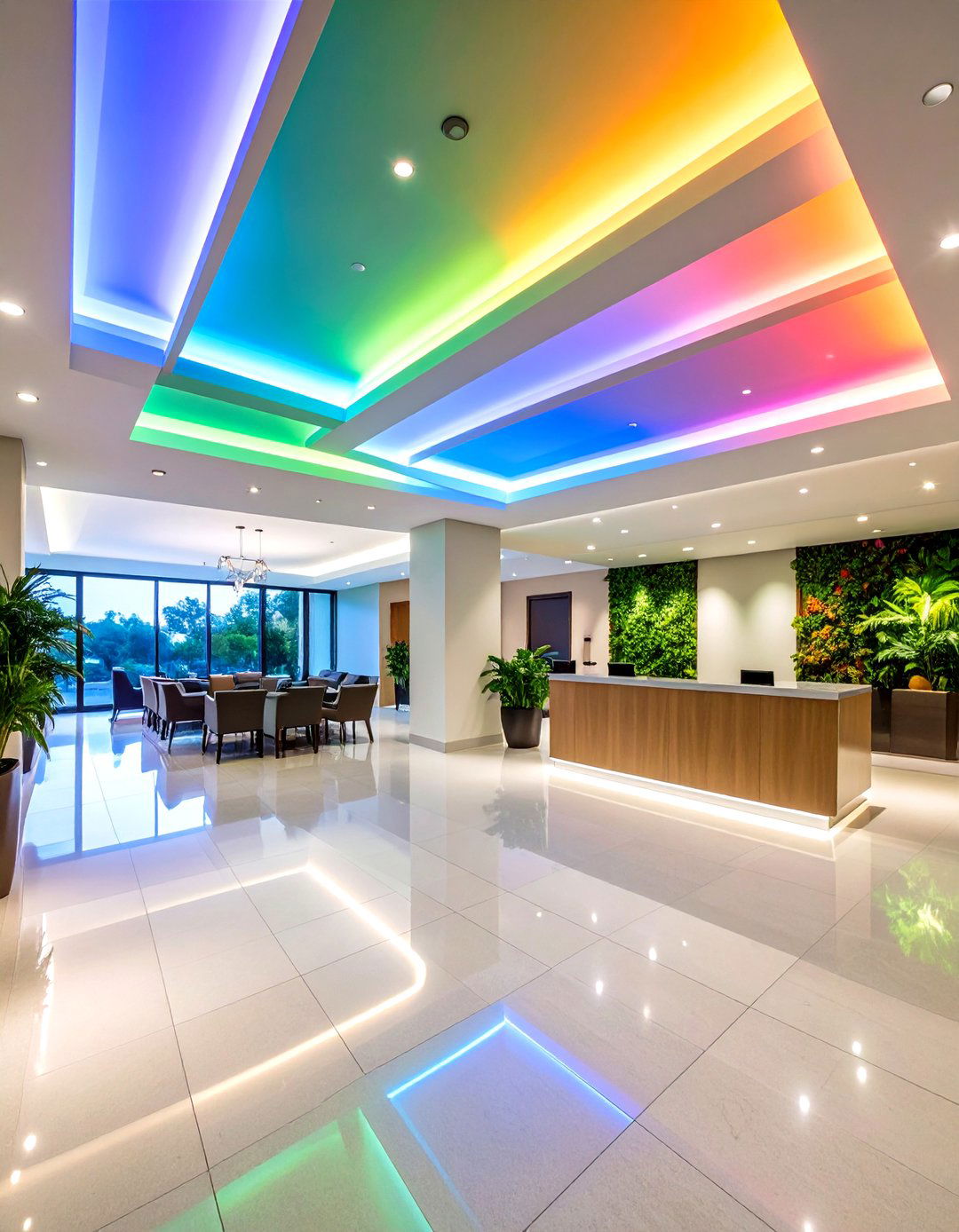




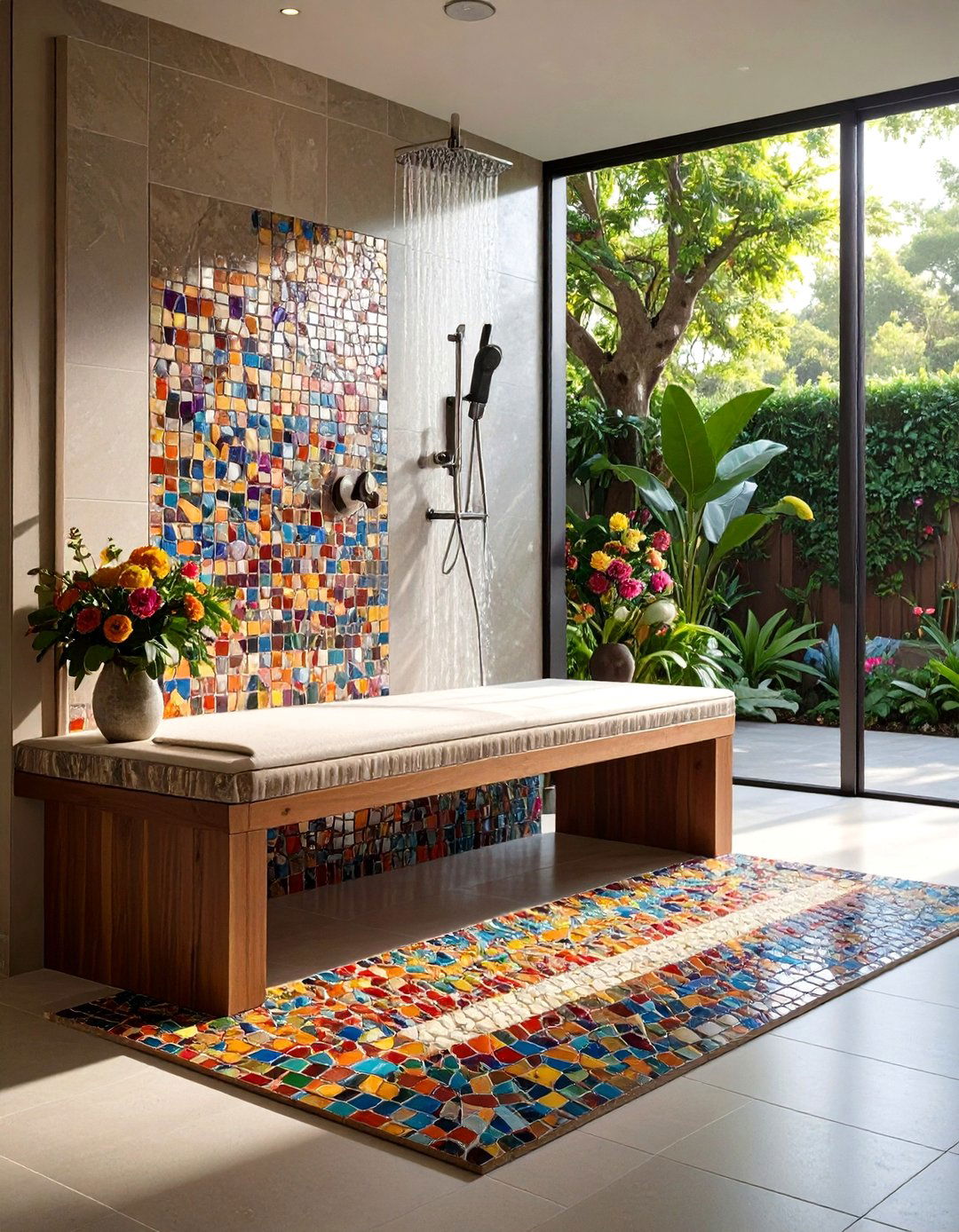
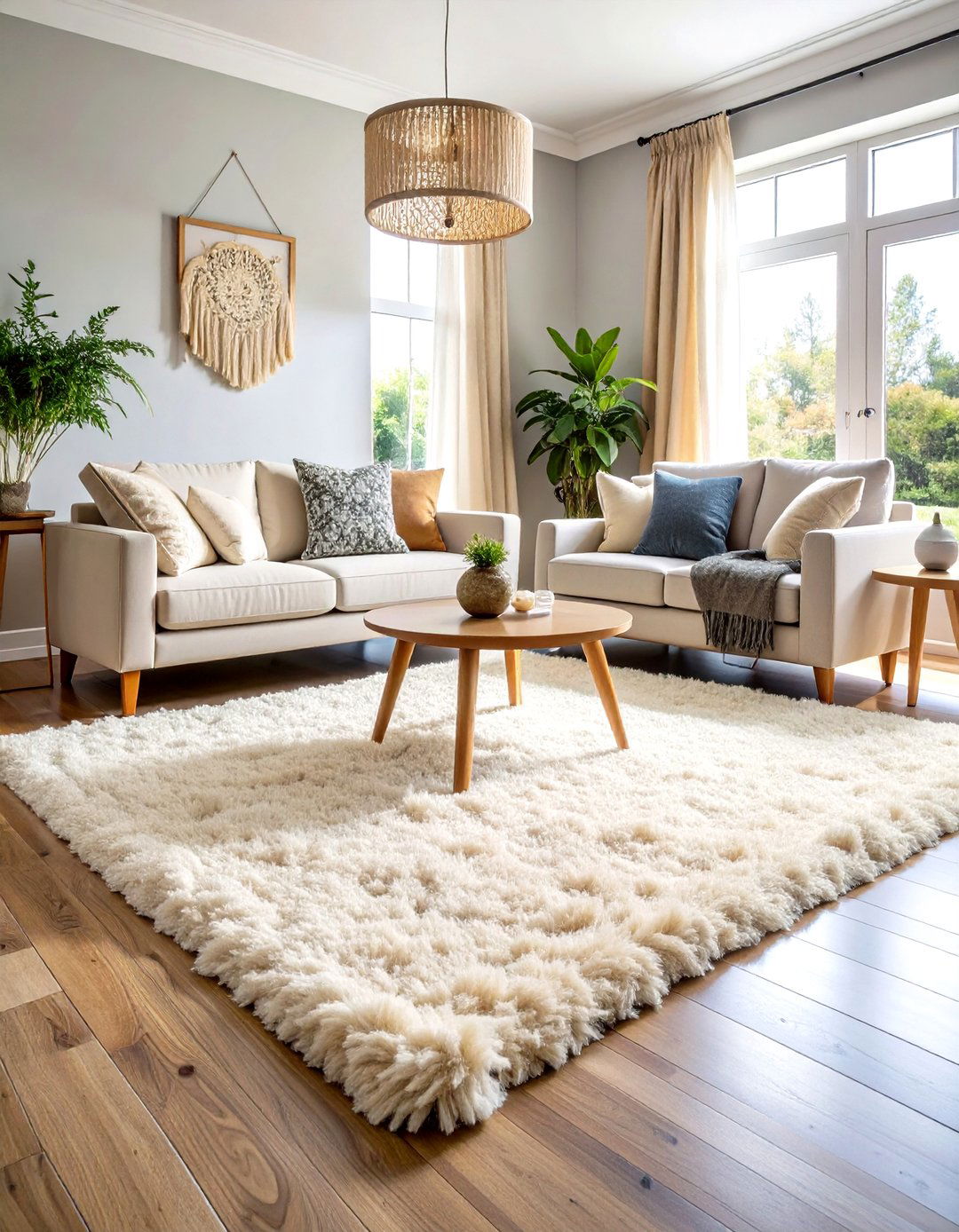
Leave a Reply